‘Journey to the West’: Why the classic Chinese novel’s mischievous monkey – and his very human quest – has inspired centuries of adaptations
Associate Professor of Chinese Studies , College of the Holy Cross

Disclosure statement
Ji Hao does not work for, consult, own shares in or receive funding from any company or organisation that would benefit from this article, and has disclosed no relevant affiliations beyond their academic appointment.
College of the Holy Cross provides funding as a member of The Conversation US.
View all partners
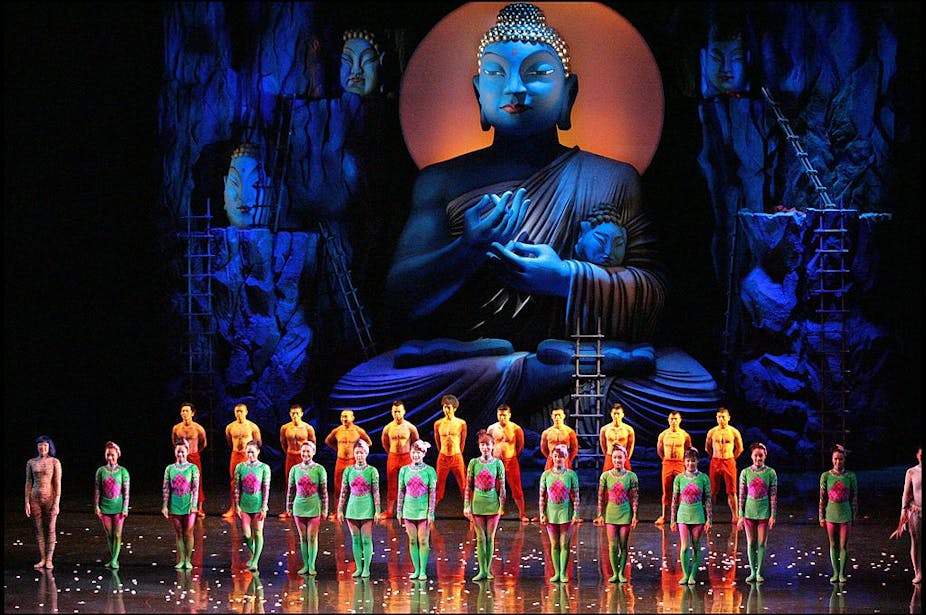
One summer afternoon in the late 1980s, my mother and I passed by a tea house on our trip out of town. The crowded building was usually a boisterous place filled with chatter, laughter, and the happy, clacking shuffle of mahjong tiles. At the moment we were passing, however, a great hush came over the teahouse: People were held spellbound by the black-and-white glow of a small TV in a corner, playing an episode of the series “Journey to the West.”
The TV series was adapted from a 16th century Chinese novel with the same title that has undergone numerous adaptations and has captured the imagination of Chinese people to this day. Like many kids in China, I was fascinated by the magic Monkey King, the beloved superhero in the novel, who went through amazing adventures with other pilgrims in their quest for Buddhist scriptures. While I had to quickly walk by the teahouse in order to catch our bus that day, this moment flashed back to me from time to time, making me wonder what made “Journey to the West” so fascinating for people of all ages and backgrounds.
After graduating from college, I embarked on the next chapter of my academic journey in the United States and reconnected with “Journey to the West” from a different perspective. Now, as a scholar with expertise in traditional Chinese literature , I am interested in the development of literary and cultural traditions around the story, including how it has been translated and reimagined by many artists .
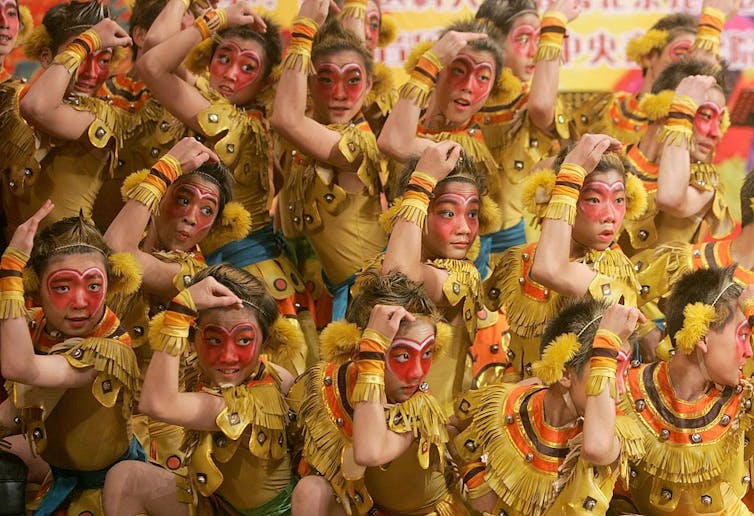
While deeply enmeshed in Chinese traditions, the story also resonates with readers from diverse cultures. “Journey to the West” creates shared ground by highlighting the quest for a common humanity, epitomized by its best-loved character, the Monkey King – a symbol of the human mind.
One journey, many stories
Scholars usually trace the beginning of this literary tradition to a Buddhist monk, Xuanzang , who set out on an epic pilgrimage to India in 627 C.E. He was determined to consult and bring back Sanskrit copies of Buddhist scriptures, rather than rely on previous Chinese translations. He did so after nearly 17 years and devoted the rest of his life to translating the scriptures.
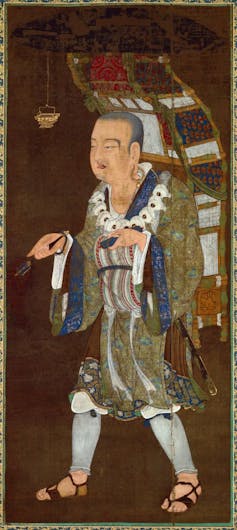
The journey has inspired a wide variety of representations in literature, art and religion, making a lasting impact on Chinese culture and society. Legends began to emerge during Xuanzang’s lifetime. Over centuries, they gradually evolved into a distinct tradition of storytelling, often focused on how Xuanzang overcame obstacles with the help of supernatural companions.
This culminated in a 16th century Chinese novel, “Journey to the West.” By this point, the hero of the story had already shifted from Xuanzang to one of his disciples: the Monkey King of Flower-Fruit Mountain, who serves as Xuanzang’s protector. The Monkey King possesses strong magical powers – transforming himself, cloning himself and even performing somersaults that fly him more than 30,000 miles at once.
Despite this novel’s dominance, the broader tradition around “Journey to the West” encompasses a wide variety of stories in diverse forms. The canonic novel itself grew out of this collective effort, and its authorship is still debated – even as it continues to inspire new adaptations.
The deeper journey
Central to all Journey to the West stories is a theme of pilgrimage, which immediately raises a question regarding the nature of the novel: What is the journey really about?
Centuries-long debates about the journey’s deeper message center on the 16th century novel. Traditional commentators in late imperial China adopted a variety of approaches to the novel and underscored its connections with different religious and philosophical doctrines: Confucianism, Daoism, Buddhism and syntheses of those teachings.
For example, all these teachings highlight the role of the “xin” – a Chinese word for mind and heart – in self-cultivation. While Confucian readers might see the plot of “Journey to the West” as the quest for a more moral life, Buddhists might decipher it as an inward journey toward enlightenment.
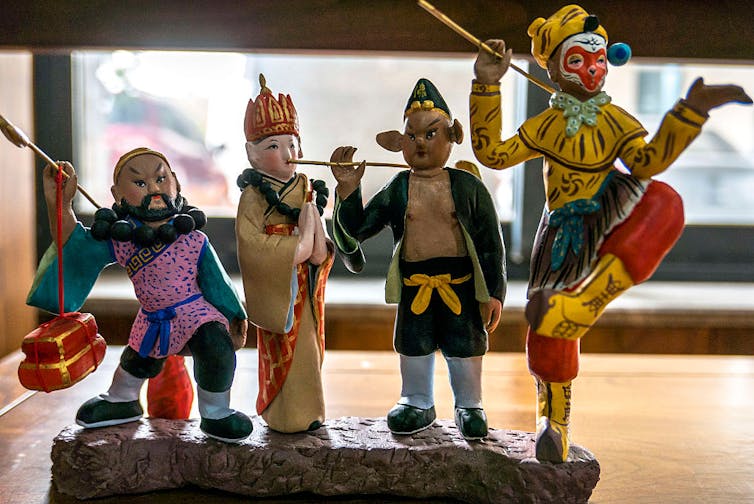
In the early 20th century, Chinese scholar and diplomat Hu Shi criticized traditional allegorical interpretations, which he feared would make the novel seem less approachable for the general public.
His opinion influenced Arthur Waley’s “Monkey ,” an abridged English translation of “Journey to the West” published in 1942, which has contributed to the canonization of the novel abroad . To a considerable extent, “Monkey” turns the pilgrims’ journey into Monkey’s own journey of self-improvement and personal growth.
Recent scholarship has further underlined religious and ritual connotations of the novel from different perspectives, and debates over the issue continue. But few people would deny that one idea plays a crucial role: the Monkey King as a symbol of the mind.
Mind monkey
There has been a long tradition in Chinese culture that associates the image of a simian creature with the human mind. On the one hand, a monkey often symbolizes a restless mind, calling for discipline and cultivation. On the other hand, an active mind also opens up the opportunity to challenge the status quo and even transcend it, progressing to a higher state.
The Monkey King in the novel demonstrates this dual dimension of the mind . He vividly displays adaptability in exploring uncharted territories and adjusting to changing circumstances – and learning to rely on teamwork and self-discipline, not merely his magic powers.
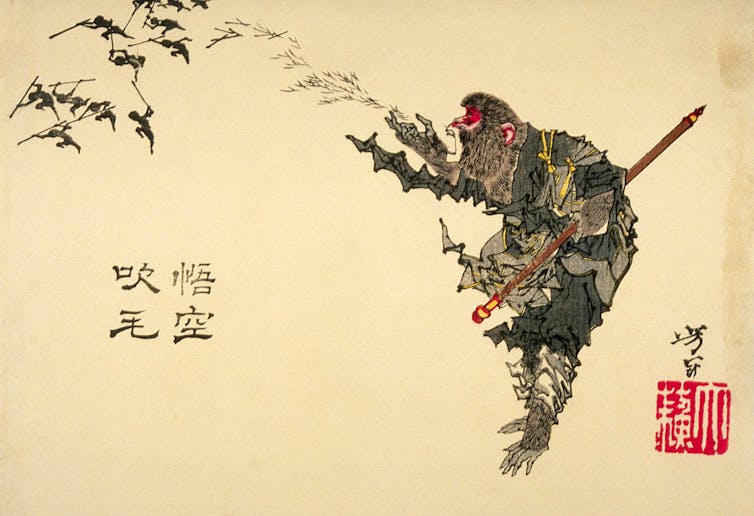
Before being sent on the pilgrimage, the Monkey King’s quest for self-gratification wreaked havoc in heaven and led to his imprisonment by the Buddha. The goddess Guanyin agreed to give him a second chance on the condition that he join the other pilgrims and assist them. His journey is fraught with the tensions between self-discipline and self-reliance, as he learns how to channel his physical and mental powers for good.
The Monkey King’s human qualities, from arrogance to fear, endow him with universal appeal. Readers gradually witness his self-improvement, revealing a common human quest. They may frown upon how the Monkey King is entrapped within his own ego, yet respect his courage in challenging authority and battling adversity. While his mischievous tricks give a good laugh, his loyalty to the monk Xuanzang and his sense of righteousness make a lasting impression.
Reviewing Waley’s “Monkey” in 1943 , Chinese-American writer Helena Kuo commented of the pilgrims: “Humanity would have missed a great deal if they have been exemplary characters.” Indeed, each one depicts humanity’s quest for a better self, particularly the main character. Monkeying around on the path of life, this simian companion captivates readers – and makes them consider their own journey.
- Confucianism
- Chinese culture
- Religion and society
- classic novels
- Ancient texts
- Ancient wisdom

Deputy Social Media Producer

Research Fellow /Senior Research Fellow – Implementation Science

Associate Professor, Occupational Therapy

GRAINS RESEARCH AND DEVELOPMENT CORPORATION CHAIRPERSON

Faculty of Law - Academic Appointment Opportunities

- Jul 2, 2022
Classical Chinese Novels 101: Journey to the West
For centuries, the literati of China wrote in Literary Chinese, crafted rigidly-structured essays, delighted in allusive poetry—and looked down on fiction as a lesser form of writing. Despite this, the stories and characters of China’s traditional novels have long influenced popular culture, and they are still readily apparent in both modern Chinese and East Asian culture.
This 101 series will serve as a basic introduction to China’s Four Great Classical Novels, as well as the entertainingly divergent (and often banned) Ming classic, Plum in the Golden Vase . In addition to discussing the development of Chinese long-form vernacular fiction, these articles will seek to present different critical interpretations of each novel, as well as highlight the insights that they offer into Chinese culture. As this series is designed for those without knowledge of Chinese or just beginning their studies of the language, Chinese names will be given in English, Chinese pinyin, and characters for the first appearance, and all subsequent references will use the English.
Classical Chinese Novels 101 is divided into six chapters:
1. Classical Chinese Novels 101: Introduction to the Traditional Chinese Novel
2. Classical Chinese Novels 101: The Romance of the Three Kingdoms
3. Classical Chinese Novels 101: Water Margin
4. Classical Chinese Novels 101: Journey to the West
5. Classical Chinese Novels 101: The Plum in the Golden Vase
6. Classical Chinese Novels 101: Dream of the Red Chamber
Journey to the West , or Xiyouji (西游记), is a late Ming dynasty (1368-1644) novel of comedic fantasy based on the religious pilgrimage of a 7th-century Chinese Buddhist monk to India in search of religious scripts. Published in the late 16th century, with the earliest extant edition dating back to 1592, Journey to the West is a hundred-chapter novel attributed to the author Wu Cheng’an.
As with Water Margin and Romance of the Three Kingdoms , the authorship of Journey to the West is still disputed (Hsia, 1968; Lee, 2010; Yu, 2008). Also like the earlier two novels, Journey to the West appears to be the lengthy culmination of a long history of narrative development. Based on the historical travels of Xuanzang, a monk who travelled to India in the early 7th century and brought back 657 Buddhist texts, the eventual folk legends that developed out of this historical pilgrimage gained ever-more fantastical elements through centuries of storytelling, from Song dynasty (960-1279) oral stories to Yuan (1271-1368) and Ming dynasty dramas (Hsia, 1968; Lee, 2010).

Though similar in development to Romance of the Three Kingdoms and Water Margin , Journey to the West represents an evolution in the traditional Chinese novel. While the ultimate identity of its author is still disputed, the novel itself is widely seen as the product of one primary author rather than a product of the type of composite authorship usually mentioned in relation to the earlier traditional novels. As the well-regarded Chinese literature professor Y. W. Ma writes, “There should not be much doubt that a single author is responsible for the extant one-hundred chapter version of the novel” (Ma, 1986:43). Indeed, Ma considers Journey to the West as one of the two novels that represent the height of Ming dynasty fiction (the second being Plum in the Golden Vase ) (Ma, 1986).
The basic structure and narrative of Journey to the West are, at first appearance, relatively simple and episodic. It begins with the tale of Sun Wukong, a monkey born from a stone who gains consciousness and then attempts to seek immortality and power. Sun Wukong, also called Monkey, rebels against Heaven and has a confrontation with the Buddha, who defeats Monkey and traps him beneath a mountain. Later, Tang Sanzang, courtesy name Tripitaka, is sent by the Tang Emperor on a mission west to find sacred Buddhist texts. Along his way, Tripitaka recruits companions who serve as his protectors and disciples; his first follower is the freed Monkey, who is bound to obey him by the Bodhisattva Guanyin (Guanyin, also a Chinese goddess of mercy, is an enlightened patron to the travellers; she appears recurringly to save them, and sometimes to test them.). His other companions are Zhu Bajie, or Pigsy in the acclaimed Arthur Waley abridged translation (1942), and Sha Wujing, or Sandy. Together, the pilgrimage members encounter and overcome (sometimes with the help of Guanyin) eighty-one trials involving demon-fighting and resisting temptation before reaching the end of their journey.

Despite its simple structure, the novel stands out among the traditional novels for its vivacious comedy and sense of fun. The 20th-century scholar and Chinese ambassador to the United States, Hu Shih, specifically emphasized the novel as a book of good humor and entertainment (Lee, 2010). Though Hu Shih was arguing for an appreciation of Journey to the West separate from its history of scrutiny and philosophical analysis, the novel is undeniably allegorical, philosophical, and rich with possible interpretations.
To begin with, Journey to the West is a novel based on the historical pilgrimage of Xuanzang. In addition to the religious journey where the main characters discuss Buddhist tenets with each other, the language of the novel borrows heavily from Taoist and Confucian texts, incorporating well-known ideas and phrases from the other two Chinese religions. For example, in his article “Formation and Fiction in Journey to the West ,” scholar Anthony Yu (2008) points out that the decision to make the fictional Tripitaka an envoy of the Tang emperor, a marked departure from the historical Xuanzang who went to India in secret and asked for pardon on his return, aligns the character more with the archetype of the traditional Confucian official-scholar. Furthermore, the character Tripitaka is far from the pious, calm traveller that one might expect given his fictional identity as either a reincarnated earth-bound dweller of Buddha’s Western Paradise, or as the fictionalized version of a devoutly religious historical pilgrim. Instead, as C. T. Hsia succinctly puts it, “he is merely helpless” (Hsia, 1968:117). A constant victim of the various ordeals the group faces, Tipitaka is nervous, fearful, and worried about completing his mission for the emperor, and requires continually rescuing. While Tripitaka’s weaknesses, complemented by Monkey’s endless mischievousness and Pigsy’s gluttony, are the main elements of comedy in the novel, they also serve greater allegorical purposes.

Many scholars, including C.T. Hsia (1968), Andrew Plaks (2015), and Anthony Yu (2008), highlight the division between Tripitaka as the all-too-human leader of the party and Monkey as the representation of the “mind” of the party in accordance with a Chinese idiomatic expression that refers to the “monkey of the mind.” This characterization of the party as separate parts of one being, supports an allegorical reading of Journey to the West which sees the eighty-one ordeals faced by the pilgrimage party, as well as the tensions between them as commentary on the proper cultivation of the heart and mind. Though Chinese expression about the "monkey of the mind" originated in Buddhist texts, by the time of Journey of the West, it was a syncretic Buddhist, Neo-Confucian and Taoist idea. At the same time, other allegorical readings focus on its treatment of Buddhist enlightenment. In The Four Masterworks of the Ming Novel , Andrew Plaks (2015) outlines how characteristics like Tripitaka’s concern for his own comfort, Pigsy’s gluttony and sensual desires, and Monkey’s quest for power are allegories for the different kinds of physical and spiritual impediments to Enlightenment. Hsia (1968) goes further in describing how Tripitaka’s continued attachments, both physical and spiritual, cause part of his susceptibility to demons' attacks and temptations; his compassion and other kindly emotions, while well-meaning, lead to more trouble. Meanwhile, Monkey’s humor, liveliness, and general disregard for others, which often offends Tripitaka’s sense of propriety and morality, is more truly aligned with Buddhist non-attachment.
In Hsia’s interpretation of the novel, the Heart Sutra received by Tripitaka at the beginning of his journey is the central message of the allegory (Hsia, 1968). The Heart Sutra teaches that “form is emptiness, and the very emptiness is form,” but Tripitaka and his fellow travellers show through their eighty-one ordeals that they are too attached to their comforts and desires (the form) (Hsia, 1968:119). Monkey, who more easily rejects his physical attachments—in one highly allegorical scene, he kills thieves called Ear, Eye, Nose, Tongue, Mind, and Body against Tripitaka's wishes—fails to find the enlightenment (the emptiness) described by the Heart Sutra because deliberately seeking enlightenment is also a form of attachment. The novel offers a representation of and commentary on the seeming paradox of attaining enlightenment (Hsia, 1968). Anthony Yu (2008) recalls other traditional interpretations of Journey to the West which indicate that the novel represents the Three-Religions-in-One ideology (Buddhism, Confucianism, and Taoism) that was common among contemporary Ming scholars. Andrew Plaks, for his part, argues that the novel is ultimately a “ psychomania of the process of the cultivation of the mind as construed by sixteenth-century thinkers” (2015:258). In Plaks’ reading, the allegorical meaning of the novel is an exploration of the conflicts relating to the cultivation of the mind while playing with the available language and motifs of Buddhism, Taoism, and Confucianism.

The various interpretations, or the arguments against excessive interpretations, aside, Journey to the West remains a beloved novel for its mixture of comedy and fantasy. Though the journey made by Tripitaka, Monkey, and the others is a story that has been retold countless times in Chinese and East Asian culture in dramas, movies, televisions shows, video games, and children's literature, English readers interested in becoming acquainted with this lively story can start with Arthur Waley’s translation before diving into the allegorical complexities of China’s three religions. Waley’s renamed version, Monkey , does great justice to the character who is arguably the most interesting and compelling figure of the novel: the fun, mischievous, and powerful Monkey King.
Bibliographical References
Hsia, C. T. (1968). The Classic Chinese Novel: A Critical Introduction = Zhongguo gudian xiaoshuo . New York Columbia University Press.
Lee, W. (2010). Full-Length Vernacular Fiction. In V. H. Mair (Ed.), The Columbia history of Chinese literature . Columbia University Press.
Ma, Y. W. (1986). Fiction. In W. H. Nienhauser (Ed.), The Indiana Companion to Chinese Literature (pp. 31–48). Indiana University Press.
Plaks, A. H. (2015). The Four Masterworks of the Ming Novel: Ssu ta ch’i-shu . Princeton University Press.
Yu, A. C. (2008). The Formation of Fiction in the “Journey to the West.” Asia Major , 21 (1), 15–44. http://www.jstor.org/stable/41649940
Visual Sources
Figure 1: Yoshitoshi, T. (Early 1880s). Sun Wukong Blows on His Hairs [woodblock print; ink and color on paper]. Museum of Fine Arts Boston. Retrieved June 30, 2022, from https://collections.mfa.org/objects/215182/sun-wukong-blows-on-his-hairs-goku-ke-o-fuku-jo-and-uba-
Figure 2: Unknown. (1690-1720). Monkey Battles the Spider Spirit [woodblock print]. The British Museum. Retrieved June 30, 2022, from https://www.britishmuseum.org/collection/object/A_1928-0323-0-20
Figure 3: Donshu, Ohara. (1815-1857). Priest Xuanzang and his attendants from the Xijouji [hanging scroll; ink and color on silk]. The British Museum. Retrieved June 30, 2022, from https://www.britishmuseum.org/collection/image/36401001
Figure 4: Wiyono, L. D. (2014). Sun Wukong, the Infamous Monkey King [digital illustration]. Retrieved June 30, 2022, from https://www.flickr.com/photos/louisdavilla/14220881646/in/photostream/

Arcadia, has many categories starting from Literature to Science. If you liked this article and would like to read more, you can subscribe from below or click the bar and discover unique more experiences in our articles in many categories
Let the posts come to you.
Thanks for submitting!

Search form
You are here, journey to the west.
The novel is a fictionalised account of the mythologized legends around the Buddhist monk Xuanzang's pilgrimage to India (known as the Western Regions) during the Tang dynasty in order to obtain Buddhist religious texts called s?tras. The Bodhisattva Guan Yin, on instruction from the Buddha, the historical founder of Buddhism, gives this task to the monk and his three protectors in the form of disciples — namely Sun Wukong, Zhu Bajie and Sha Wujing — together with a dragon prince who acts as Xuanzang's steed, a white horse. These four characters have agreed to help Xuanzang as an atonement for past sins. Journey to the West has a strong background in Chinese folk religion, Chinese mythology and value systems; the pantheon of Taoist immortals and Buddhist bodhisattvas is still reflective of some Chinese folk religious beliefs today. Part of the novel's enduring popularity comes from the fact that it works on multiple levels: it is an adventure story, a dispenser of spiritual insight, and an extended allegory in which the group of pilgrims journeying toward India stands for the individual journeying toward enlightenment.
English translation: http://www.chine-informations.com/fichiers/jourwest.pdf
Traditional Chinese: http://open-lit.com/bookindex.php?gbid=14
Wikipedia page: http://en.wikipedia.org/wiki/Journey_to_the_West
Featured Articles

Happy Year of The Dragon! 祝您龙年快乐!
Happy Lunar New Year from the USC US-China Institute!

Passings, 2023
We note the passing of many prominent individuals who played some role in U.S.-China affairs, whether in politics, economics or in helping people in one place understand the other.

From Netflix to iQiyi: As the World Turns, Serial Dramas in Virtual Circulation
Ying Zhu looks at new developments for Chinese and global streaming services.

The War for Chinese Talent in the United States
David Zweig examines China's talent recruitment efforts, particularly towards those scientists and engineers who left China for further study. U.S. universities, labs and companies have long brought in talent from China. Are such people still welcome?

Journey to the West | Full Story, Summary & Moral Lessons
- February 19, 2024
“Journey to the West” stands as one of the pinnacles of Chinese literature, a riveting blend of mythology, folklore, humor, and spirituality .
Authored by Wu Cheng’en in the 16th century during the Ming dynasty, this epic novel has transcended its cultural origins to become a global literary treasure!
The narrative follows the perilous journey of the Buddhist monk Xuanzang, historically known, as he travels to India to obtain sacred Buddhist scriptures. Accompanied by his three disciples— Sun Wukong , Zhu Bajie, and Sha Wujing—each with their own unique abilities, their quest is filled with divine interventions, battles with demons, and moral lessons.
Many of which we will be getting to know today!
Table of Contents
Historical Context
The “Journey to the West” is deeply entwined with the real-life travels of Xuanzang (602-664 CE), whose pilgrimage to India and back took 17 years, a journey undertaken to obtain authentic Buddhist scriptures.
Wu Cheng’en’s fictionalized account, however, does more than narrate a religious quest; it weaves a rich story of Chinese myths, Taoist and Buddhist philosophy, and satirical commentary on the social issues of his time, making it a multifaceted work of art.
If you’re interested in watching the Journey to the West, I highly recommend the 1986 series as it’s often lauded as being not only the most accurate but also you can really feel the love and respect given to the adaptation.
Key Characters
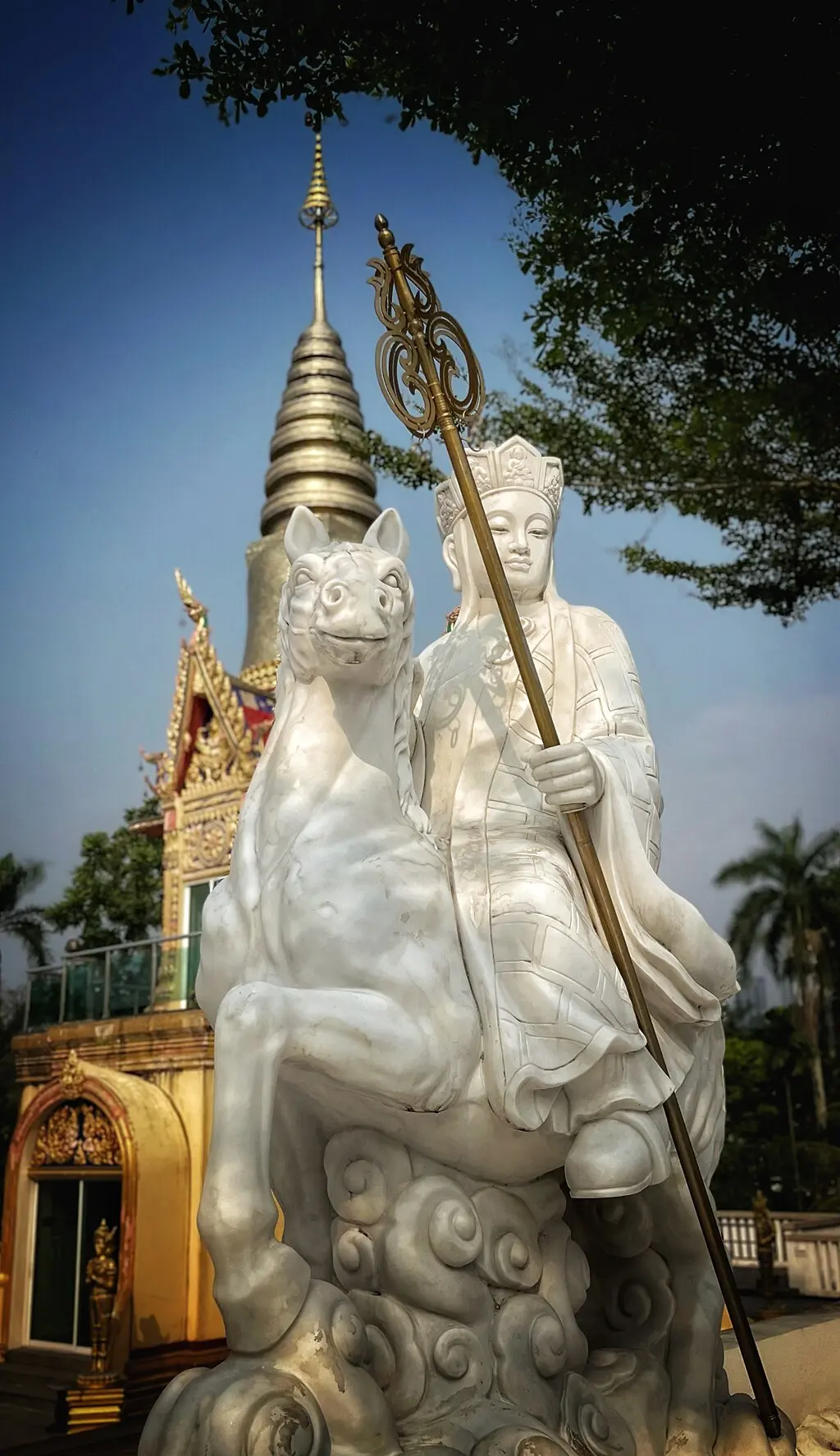
Tang Sanzang
Tang Sanzang, also known as Tripitaka , stands at the heart of “Journey to the West” as its protagonist. His mission to retrieve sacred Mahayana Buddhist scriptures from India serves as the narrative’s driving force. Tang Sanzang embodies virtues such as humility, compassion, and unwavering dedication to his spiritual quest.
His portrayal as the epitome of piety and moral integrity offers a rich canvas against which his interactions with disciples and various challenges unfold.
Tang Sanzang’s personality is a blend of devout faith and moral steadfastness. He is the moral compass for his disciples, guiding them not only towards their external goal but also on their internal journeys of growth and enlightenment .
Despite his virtues, Tang Sanzang is not portrayed as infallible. His naivety and strict adherence to religious doctrines sometimes lead him into trouble, requiring rescue by his more worldly and powerful disciples. This aspect of his character highlights the novel’s exploration of the balance between innocence and wisdom, as well as the necessity of worldly knowledge in achieving spiritual goals.
Throughout the novel, Tang Sanzang undergoes significant development. His journey is not only a physical one across dangerous terrains but also a spiritual odyssey that tests and refines his character. He learns to balance his strict moral codes with the practicalities of the world, growing in understanding and compassion towards his disciples and the beings they encounter.
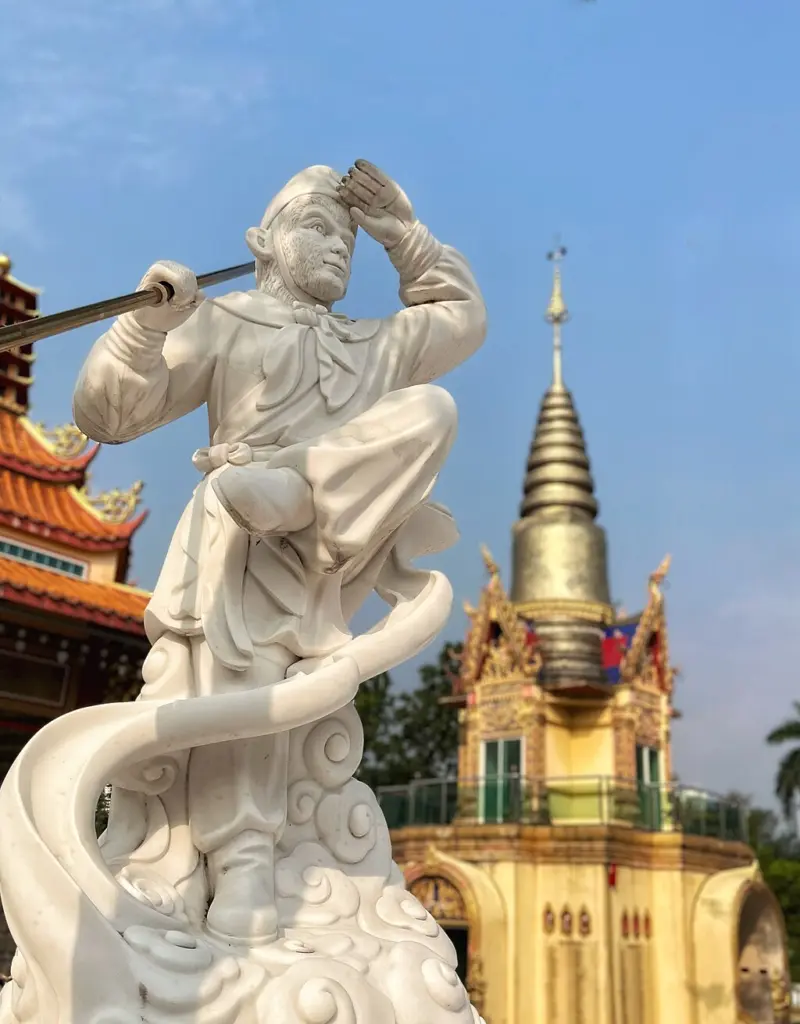
Sun Wukong , famously known as the Monkey King , is one of the most beloved characters in “Journey to the West.”
His origins are as magical as his personality; born from a stone egg on the Mountain of Flowers and Fruit, Sun Wukong acquires supernatural powers through Taoist practices.
His abilities include shape-shifting, immense strength, and the ability to travel vast distances in a single somersault. Despite his powers, Sun Wukong’s early journey is marked by rebellion and pride, leading him to challenge the heavens themselves.
His initial defiance against the celestial order and subsequent punishment—being imprisoned under a mountain by the Buddha—sets the stage for his redemption arc.
His release by Tang Sanzang and commitment to protect the monk on the journey to India is a turning point, marking his transition from a rebellious figure to a devoted disciple. This journey serves as a path of self-discovery and spiritual maturation for Sun Wukong, as he confronts challenges that test his ingenuity, patience, and fidelity.
The Monkey King’s personality is multifaceted; he is cunning and playful, yet capable of profound wisdom and bravery. His loyalty to Tang Sanzang is unwavering, and he becomes the monk’s most powerful protector, using his abilities to overcome demons and obstacles that the pilgrimage encounters. Sun Wukong’s transformation from a mischievous troublemaker to a protector embodies the novel’s themes of redemption and the possibility of spiritual growth regardless of one’s past.
In terms of symbolic significance, Sun Wukong represents the untamed mind and the potential for enlightenment within all beings. His journey from arrogance to enlightenment mirrors the Buddhist path, emphasizing the importance of humility, learning, and devotion.
Through Sun Wukong, “Journey to the West” explores the idea that even the most unruly spirits can achieve enlightenment through perseverance, guidance, and self-reflection.
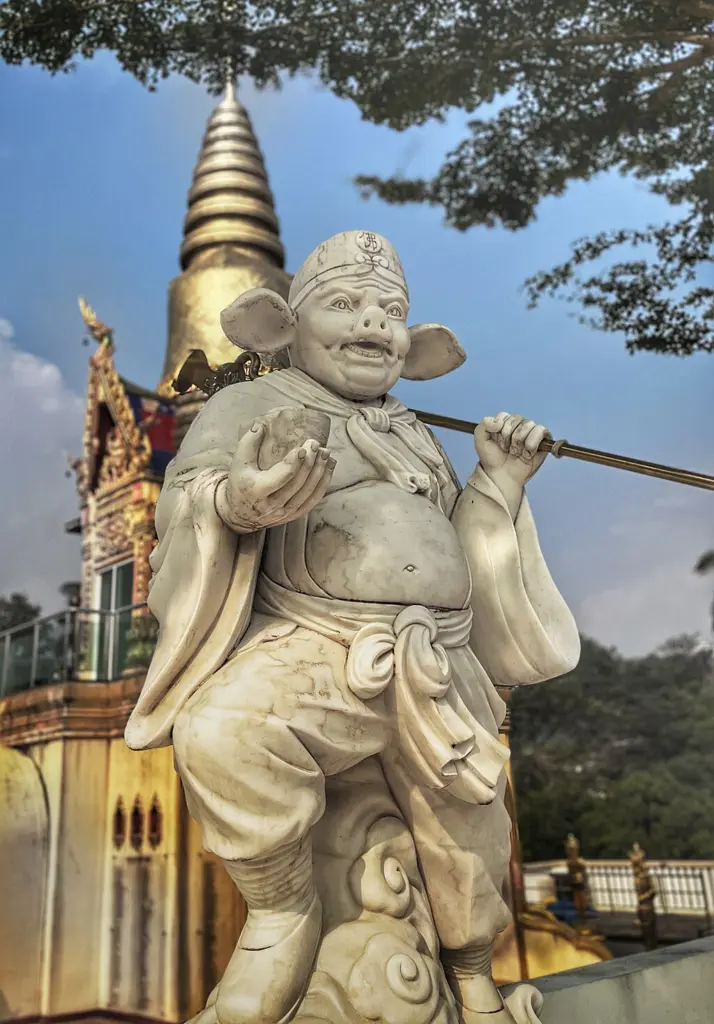
Zhu Bajie, often referred to as Pigsy , is known for his complex and somewhat contradictory character traits. Originally a marshal in the celestial army, Zhu Bajie was banished to the mortal realm as a punishment for his indiscretions in heaven, particularly with the Moon Goddess, Chang’e .
Transformed into a pig-human hybrid, his appearance reflects his base nature and penchant for indulgence, especially in food and women. Despite these flaws, Zhu Bajie becomes one of Tang Sanzang’s disciples, joining the quest to retrieve the Buddhist scriptures from India.
Zhu Bajie’s personality is marked by a mix of bravery and cowardice, loyalty and self-interest, wisdom and folly. He often provides comic relief in the story through his antics and bumbling mistakes, yet his character also displays moments of insight and bravery.
His earthly desires and tendencies towards laziness often put him at odds with his more disciplined and spiritually focused companions, particularly Sun Wukong, with whom he shares a rivalry.
While he deeply respects Tang Sanzang and is committed to the pilgrimage, his weaknesses often lead to complications and challenges for the group. However, these shortcomings make his moments of courage and sacrifice all the more significant, highlighting the theme of redemption and the possibility of moral and spiritual growth regardless of one’s past actions or nature.
Zhu Bajie’s character serves as a reflection on human nature, embodying the struggles between base desires and higher aspirations, between selfishness and altruism. His journey alongside Tang Sanzang is as much about his own redemption and transformation as it is about the physical pilgrimage to India.
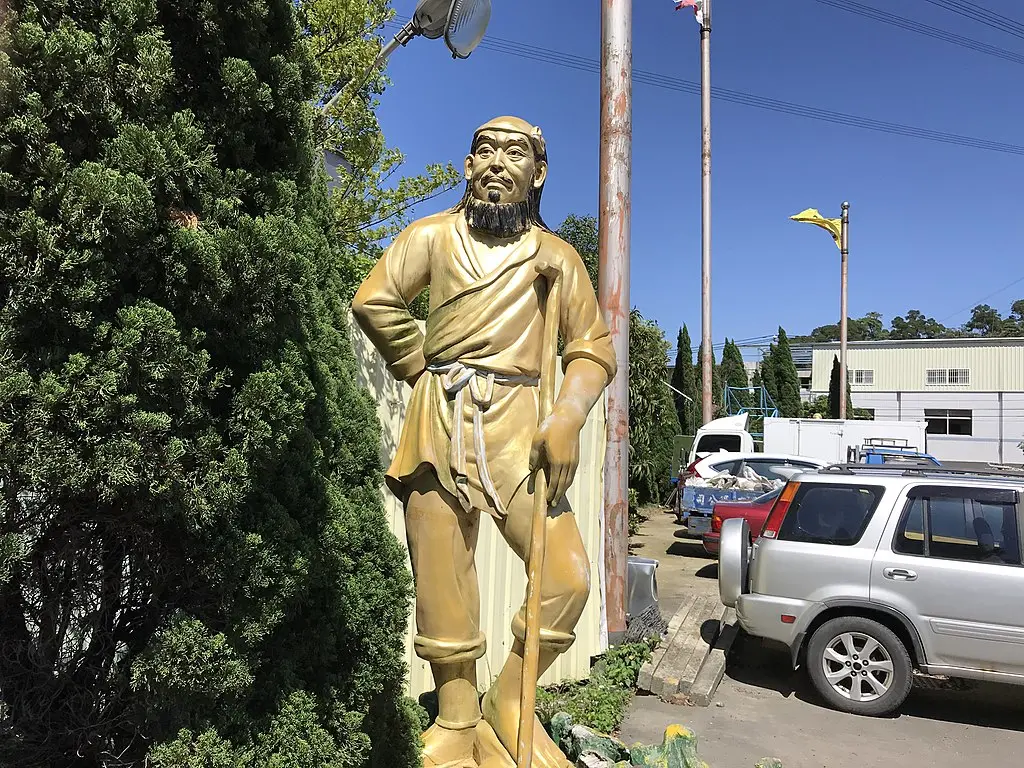
Sha Wujing, or Sandy , is the third disciple who joins Tang Sanzang. Once a celestial general, Sha Wujing was banished to the mortal world as punishment for a transgression in heaven, where he was transformed into a river ogre.
His frightening appearance belies a kind heart and a steadfast, loyal nature. Recognizing his past mistakes, Sha Wujing seeks redemption through service to Tang Sanzang on the perilous journey to the West.
Characteristically, Sha Wujing is the embodiment of stoicism and reliability. Compared to the more flamboyant Sun Wukong and the often comically flawed Zhu Bajie, Sha Wujing’s demeanor is subdued and earnest.
He is less prone to the antics and disputes that sometimes ensnare his fellow disciples, showcasing a level of maturity and wisdom that stabilizes the group. His role is often that of the peacemaker, bridging gaps between his more temperamental companions and ensuring the pilgrimage remains focused on its spiritual goals.
Armed with a magic staff that he uses to combat demons and other threats, he is a formidable fighter in his own right. His knowledge of aquatic environments also proves invaluable, as many of the journey’s challenges take place near or in water.
The Journey to the West
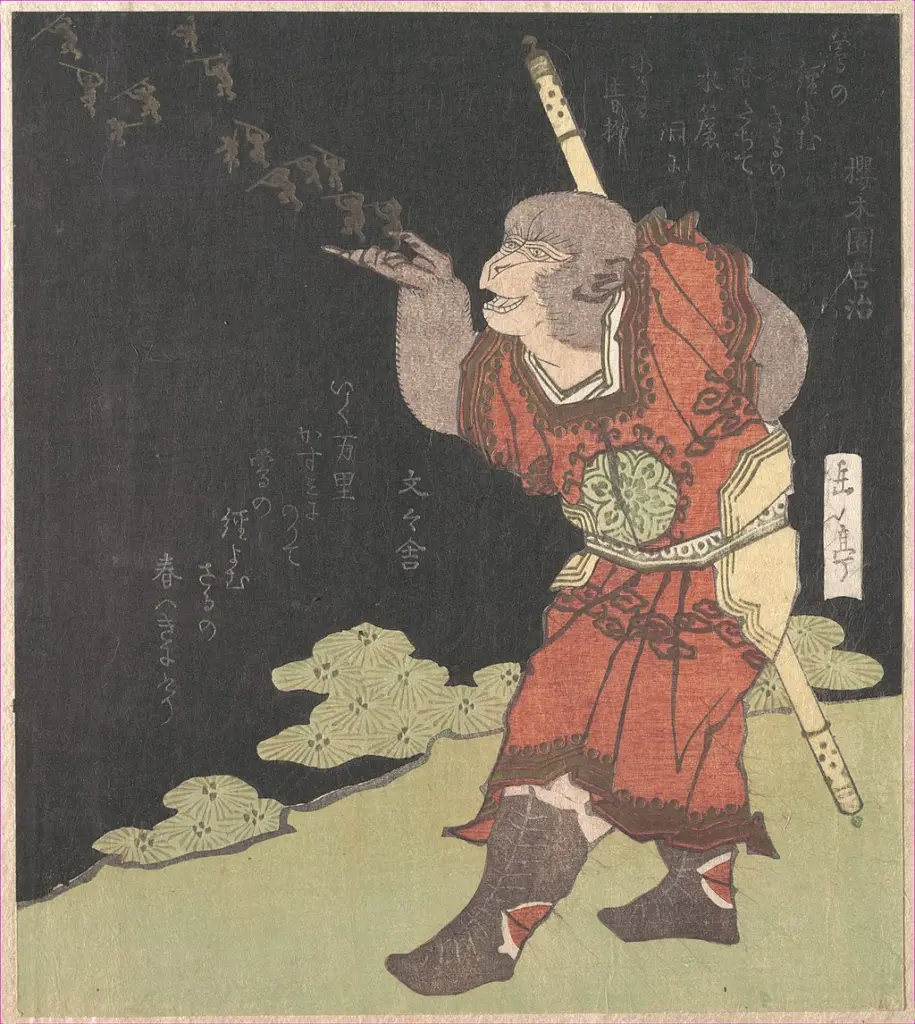
The Origins
In the lush, mystical expanse of the Mountain of Flowers and Fruit, a stone egg, nurtured by the elements and the heavens, gave birth to Sun Wukong, the Monkey King. This miraculous birth marked the beginning of an extraordinary being destined to leave an indelible mark on the realms of gods and mortals alike. Possessing incredible strength, agility, and a keen intellect from birth, Sun Wukong quickly established himself as the king of the monkeys, securing their loyalty through his bravery and wisdom.
Driven by an insatiable curiosity and the fear of death, Sun Wukong embarked on a quest for immortality. His journey led him to the tutelage of a Taoist sage, from whom he learned the secrets of magical arts, shape-shifting, and the way of immortality. These newfound powers, coupled with his natural cunning and prowess, made Sun Wukong a being of unmatched ability.
However, with great power came a great desire for recognition and respect. Sun Wukong’s ambitions soon turned him against the celestial order. Seeking to claim his place among the gods and immortals, he caused havoc in the heavens, challenging the authority of the Jade Emperor himself. His antics and defiance led to a celestial war between his monkey army and the heavenly forces.
The turmoil caused by Sun Wukong could not go unpunished. Despite his might, he was eventually captured by the combined efforts of the Buddha and the celestial army. To curb his rebellious spirit, Buddha imprisoned Sun Wukong under the Five Elements Mountain, sealing him with a magical spell for five hundred years. This punishment was not just a consequence of his actions but also a pivotal moment of transformation. Under the mountain, Sun Wukong was forced to reflect on his deeds and the consequences of his unchecked ambition.
This period of imprisonment was a crucible, tempering Sun Wukong’s fiery spirit with a newfound understanding of responsibility and the importance of humility. It was here, in the shadow of his actions and under the weight of the mountain, that the foundation was laid for his redemption and eventual role as a protector on the journey to the West.
The Calling of Tang Sanzang
In the empire of the Tang Dynasty, under the watchful eyes of celestial beings, the birth of Tang Sanzang was foretold with a prophecy. He was destined to be no ordinary monk, but one whose journey would mark a pivotal moment in the spiritual fabric of the world. From an early age, Tang Sanzang displayed an uncommon devotion to his Buddhist faith, his heart set on understanding the deepest truths of existence and alleviating the suffering of all beings. His life was filled with piety, scholarship, and an unwavering commitment to the path of enlightenment, setting him apart as a vessel for divine purpose.
The turning point in Tang Sanzang’s life came through a divine revelation, where the Bodhisattva Guanyin presented him with a mission of paramount importance. He was to travel to the Western regions of India to retrieve sacred Buddhist scriptures not yet available in China . These texts held the key to deepening the spiritual understanding and salvation for countless souls in his homeland. This was not just a journey across lands; it was a pilgrimage that would test the limits of his faith, endurance, and spirit.
The gravity of this mission was clear; the scriptures were vital for the propagation of Buddhism in China, promising a new era of spiritual insight and enlightenment. However, the path to the West was fraught with perils beyond imagination—demons, treacherous landscapes, and trials that would challenge the very essence of his being. It was a journey that no one could undertake alone and survive, let alone succeed.
Recognizing the monumental challenges that lay ahead, the Bodhisattva Guanyin promised Tang Sanzang divine assistance in the form of disciples who would protect and guide him through the dangers. These disciples, each with their own paths to redemption and enlightenment, were destined to be united with Tang Sanzang, forming an unlikely fellowship bound by a shared mission.
Thus began Tang Sanzang’s journey, a quest that was not only his own but one that carried the hopes and spiritual aspirations of the entire Buddhist community. With the divine mandate bestowed upon him, Tang Sanzang set forth, stepping into the annals of legend.
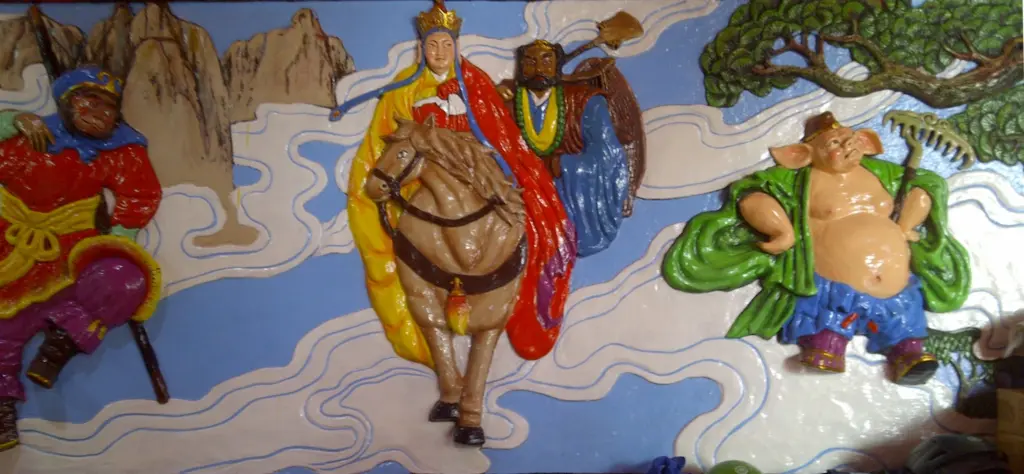
Assembling the Disciples
As Tang Sanzang began his perilous journey to the West, the first to join him was none other than Sun Wukong, the Monkey King. Freed from his five-century imprisonment under the Five Elements Mountain by Tang Sanzang himself, Sun Wukong was bound to him by a vow. This vow, forged in the fires of redemption (and the head-tightening band), was Sun Wukong’s promise to protect Tang Sanzang throughout the journey. The release symbolized not only Sun Wukong’s second chance but also the formation of an unbreakable bond between the disciple and his master. With his unparalleled martial prowess and magical abilities, Sun Wukong was a formidable protector, one whose loyalty and dedication to Tang Sanzang’s mission were beyond question.
The next to join this celestial mission was Zhu Bajie, once a marshal in the heavens, now living as a half-human, half-pig being as punishment for his lascivious behavior in the celestial realm. Encountered by Tang Sanzang and Sun Wukong, Zhu Bajie was persuaded to join the pilgrimage, seeking redemption for his past misdeeds.
Sha Wujing, the third disciple, was once a celestial general who, due to a grave mistake, was banished to a river, taking the form of a fearsome water ogre. His encounter with Tang Sanzang and the promise of redemption through service transformed Sha Wujing from a feared monster into a loyal disciple.
Together, these three disciples, each with their unique strengths, weaknesses, and backgrounds, formed the core of Tang Sanzang’s entourage. Their assembly was no mere coincidence but a divinely orchestrated gathering of souls seeking redemption, enlightenment, and the fulfillment of a sacred mission.
Trials and Tribulations
As Tang Sanzang and his newly assembled disciples embarked on their journey to the West, they were soon met with a series of trials that tested their resolve, unity, and individual capabilities. These challenges served not only as obstacles to be overcome but also as crucibles for character development and bonding among the pilgrims.
One of the first major trials they faced was the Black Wind Mountain, where a fierce demon known for capturing and eating travelers threatened their mission. It was here that Sun Wukong’s prowess and quick thinking were first put to the test, showcasing his ability to protect Tang Sanzang against seemingly insurmountable odds.
Another significant challenge came in the form of the White Bone Demon, a creature capable of changing its form to deceive and capture Tang Sanzang. This trial tested not only the physical strength of the disciples but also their wisdom and ability to see through deception.
These early trials also brought to the forefront the dynamics and interactions among the disciples. Sun Wukong’s impulsive nature and readiness to use force were often at odds with Tang Sanzang’s more compassionate and pacifistic approach, leading to tensions within the group. Zhu Bajie and Sha Wujing, each with their distinct personalities and strengths, found themselves navigating the complex dynamics between their desire for redemption and the often chaotic leadership of Sun Wukong.
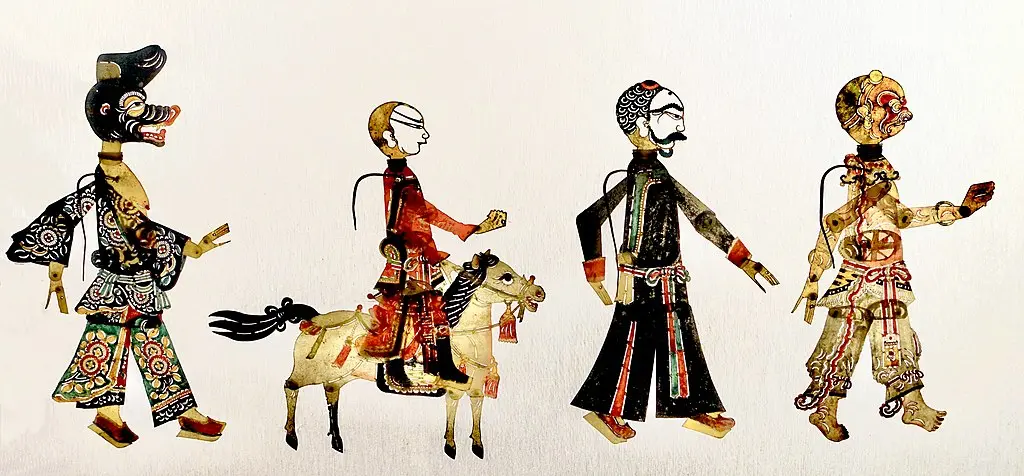
The Final Challenges
As Tang Sanzang and his disciples neared the end of their epic quest to retrieve the sacred scriptures from the West, they encountered the Fiery Mountain, a vast barrier of flames that seemed insurmountable. This natural obstacle was a metaphor for the burning trials of the spirit, a test of their resolve and unity. To pass, they needed the fan of the Princess Iron Fan, a task that proved to be as much about diplomacy and wisdom as it was about strength and courage. The quest for the fan was marked by deception and challenges that tested their patience and ingenuity, especially for Sun Wukong, whose confrontations with the Princess pushed him to find non-violent solutions.
Following this, the pilgrims faced the ordeal of the Tenfold Maze, a bewildering labyrinth that tested their mental endurance and faith. The Maze, crafted by powerful magic, represented the inner confusions and doubts that can lead one astray from the path of enlightenment. Each turn and dead end forced the disciples to rely not just on Sun Wukong’s strength or Zhu Bajie’s might, but on Tang Sanzang’s unwavering faith and Sha Wujing’s quiet determination. It was their unity and collective wisdom that eventually led them through the maze, symbolizing the triumph of shared purpose over individual despair.
Perhaps the most significant trial came in the form of a spiritual challenge directly from the Buddha. Before granting them the scriptures, Buddha tasked Tang Sanzang and his disciples with a final test of their virtues and understanding of the Buddhist teachings. This trial was not about battling demons or overcoming physical barriers but confronting their inner selves and the essence of their journey. Each disciple, including Tang Sanzang, faced manifestations of their past errors, fears, and desires, challenging them to apply the lessons of compassion, humility, and perseverance they had learned on their journey.
The confrontation with their inner demons was a profound moment for the pilgrims, especially for Sun Wukong, whose journey from rebel to protector had been fraught with pride and anger. For Zhu Bajie, it was a moment to transcend his baser instincts and desires, while Sha Wujing confronted the solitude and obscurity of his existence with newfound peace. For Tang Sanzang, it was the ultimate test of his faith and his commitment to his mission, proving his worthiness to receive the sacred texts.
Arrival in the West
After overcoming the final, daunting challenges set before them, Tang Sanzang and his disciples reached their sacred destination in the West. It was here, in the presence of the Buddha, that they were finally granted the sacred scriptures.
The attainment of the sacred scriptures was an achievement of monumental significance. For Tang Sanzang, it represented the fulfillment of a divine mission entrusted to him, affirming his unwavering faith and dedication. The scriptures themselves were not just texts but beacons of wisdom, destined to enlighten countless generations to come. Their acquisition symbolized the bridging of divine knowledge from the West to the East, promising an era of spiritual awakening and understanding for Tang Sanzang’s homeland.
For the disciples, the journey to the West and the acquisition of the scriptures were transformative. Sun Wukong, once a rebellious figure driven by pride and the desire for immortality, emerged as a being of enlightenment, his actions tempered by wisdom and compassion. The journey refined his character, turning his immense power and cunning into instruments of protection and service to a cause greater than himself.
Upon their return to the Tang Empire, the pilgrims were received with reverence. The sacred scriptures were translated and spread, seeding the growth of Buddhism and its teachings throughout the land. The disciples, each awarded divine recognition for their service, achieved a form of enlightenment that transcended their former selves ( Both Sun Wukong and Tang Sanzang were turned into Buddhas .)
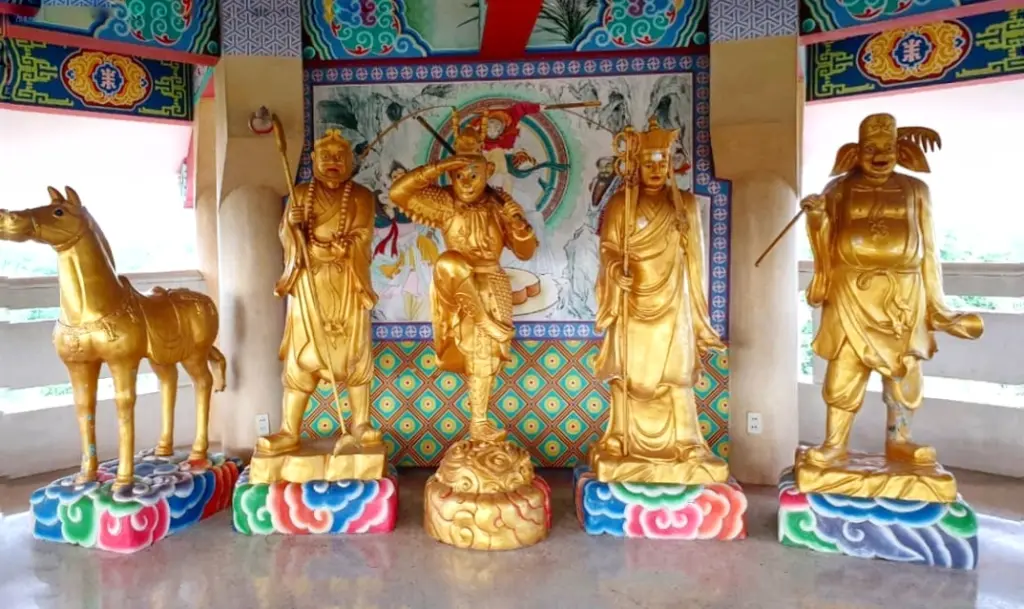
Summary of the Journey to the West
“Journey to the West” is a chronicling of the pilgrimage of the Buddhist monk Tang Sanzang and his quest to retrieve sacred scriptures from India. Alongside him are his three disciples: Sun Wukong, the Monkey King, with his unparalleled martial prowess and magical abilities; Zhu Bajie, the gluttonous and lecherous pig demon with a heart of gold; and Sha Wujing, the steadfast and reliable river demon. Each disciple, once celestial beings now seeking redemption for past transgressions, brings unique strengths and weaknesses to the journey, creating a dynamic and sometimes volatile mix of personalities.
The narrative begins with the birth and rise of Sun Wukong, who, after acquiring magical powers and challenging the heavens, is imprisoned under a mountain by the Buddha for his arrogance. Meanwhile, Tang Sanzang, chosen by the Bodhisattva Guanyin , embarks on a mission to the West to obtain Buddhist sutras that will enlighten the East. Along the way, he liberates and recruits Sun Wukong, Zhu Bajie, and Sha Wujing, who vow to protect him in exchange for their spiritual redemption.
Their journey is fraught with peril, encountering a series of demons and monsters intent on capturing Tang Sanzang for their own gain. Each challenge tests the group’s resolve, faith, and unity, with Sun Wukong’s quick wit and might often saving the day. Despite their differences and the difficulties they face, the pilgrims learn valuable lessons in compassion, patience, humility, and perseverance. These trials serve not only as physical obstacles but as spiritual tests, refining each disciple’s character and strengthening their bonds.
The pilgrimage is marked by significant trials, from battling the fiery Red Boy and outsmarting the cunning Spider Demons to navigating the treacherous Flaming Mountain and the illusion-filled Tenfold Maze. Each ordeal brings them closer together, teaching them the importance of teamwork, sacrifice, and the pursuit of enlightenment.
Upon reaching the West and passing the final tests set by the Buddha, Tang Sanzang and his disciples are granted the scriptures. Their return to the Tang Empire is triumphant, with each disciple achieving enlightenment and recognition for their service. The sacred texts they bring back promise a new era of spiritual awakening for their homeland.
- Loyalty and Devotion: The loyalty of Sun Wukong, Zhu Bajie, and Sha Wujing to Tang Sanzang is a central theme that underscores the importance of fidelity in the face of adversity. Their unwavering commitment to protect their master and ensure the successful retrieval of the sacred scriptures speaks to the value of loyalty in achieving a higher spiritual purpose.
- Perseverance through Trials: The pilgrims’ journey is fraught with challenges that test their resolve, faith, and endurance. Each trial, whether it be a confrontation with demons or overcoming natural obstacles, symbolizes the inner struggles individuals face on their path to enlightenment.
- The Quest for Enlightenment: At its heart, “Journey to the West” is a spiritual odyssey that mirrors the Buddhist path to enlightenment. The journey to retrieve the scriptures symbolizes the pursuit of wisdom and understanding, essential for liberation from suffering and the cycle of rebirth. The transformations of the characters, especially the disciples, reflect the individual’s journey toward enlightenment, marked by self-discovery, repentance, and spiritual growth.
- The Battle between Good and Evil: The frequent encounters with demons and the celestial trials faced by Tang Sanzang and his disciples embody the eternal struggle between good and evil. This theme is not only external, in the battles with literal demons, but also internal, representing the moral and spiritual conflicts within each character.
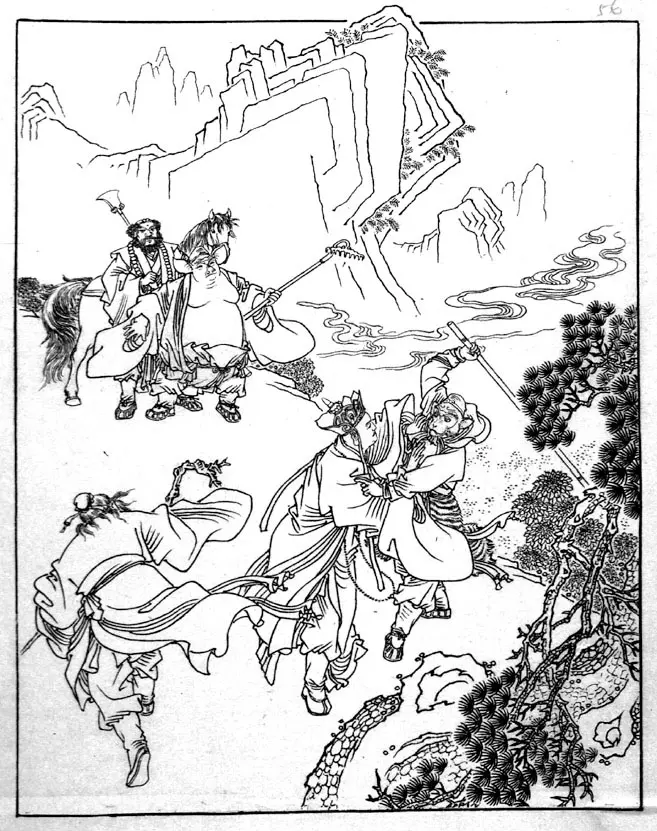
- Characters as Symbolic Archetypes: The main characters of “Journey to the West” are rich in symbolic significance. Sun Wukong, with his rebellious nature and transformative journey, symbolizes the untamed mind and the potential for enlightenment through discipline and self-cultivation. Zhu Bajie represents human desires and flaws, highlighting the struggles and potential for redemption despite one’s imperfections. Sha Wujing embodies steadfastness and humility, qualities essential for spiritual progress.
- Events as Metaphors for Spiritual Lessons: Many of the events and trials encountered by the pilgrims are metaphors for spiritual lessons. For example, the crossing of the Flaming Mountain can be seen as a metaphor for overcoming the burning passions and attachments that hinder spiritual growth. The encounters with various demons can represent the overcoming of personal obstacles on the path to enlightenment.
- The Journey Itself: The journey to the West is symbolic of the Buddhist path towards enlightenment. It is fraught with difficulties and distractions, much like the spiritual journey of an individual.
Moral Lessons
- Redemption and the Potential for Change : The characters of “Journey to the West,” especially the disciples of Tang Sanzang, embody the theme of redemption and the belief in the potential for change. Sun Wukong, Zhu Bajie, and Sha Wujing, each banished for their transgressions, find in their journey an opportunity for transformation. Their willingness to protect Tang Sanzang and endure hardships for the sake of obtaining the sacred scriptures illustrates the possibility of redemption, regardless of past misdeeds. This reflects the Buddhist concept of karma and the idea that positive actions can counteract negative past actions, leading to spiritual growth and liberation.
- Virtue and Moral Integrity : Throughout the novel, Tang Sanzang serves as a moral compass, embodying virtue and moral integrity. His compassion, patience, and unwavering commitment to non-violence, even in the face of danger, highlight the importance of upholding one’s principles. Tang Sanzang’s interactions with demons, often opting for understanding and conversion rather than conflict, reinforce the novel’s message that compassion and wisdom are more powerful than force.
- The Pursuit of Knowledge and Enlightenment : “Journey to the West” places great emphasis on the pursuit of knowledge and enlightenment, both as a personal quest and for the benefit of others. The journey to obtain the Buddhist scriptures symbolizes the quest for spiritual knowledge and truth. This quest is not portrayed as easy or straightforward but rather as a path filled with obstacles that require perseverance, sacrifice, and moral fortitude to overcome.
- Humility and Self-Cultivation : Finally, “Journey to the West” teaches the importance of humility and self-cultivation. The characters, particularly Sun Wukong, learn to temper their pride and recognize their limitations. This humility, coupled with a commitment to self-improvement and spiritual cultivation, is portrayed as essential for growth and enlightenment. The novel thus conveys the moral lesson that true strength and wisdom come from understanding oneself, acknowledging one’s flaws, and striving for self-betterment.
SHARE THIS POST
Read this next.

Indra’s Net Explained | A Metaphor of Interconnectedness
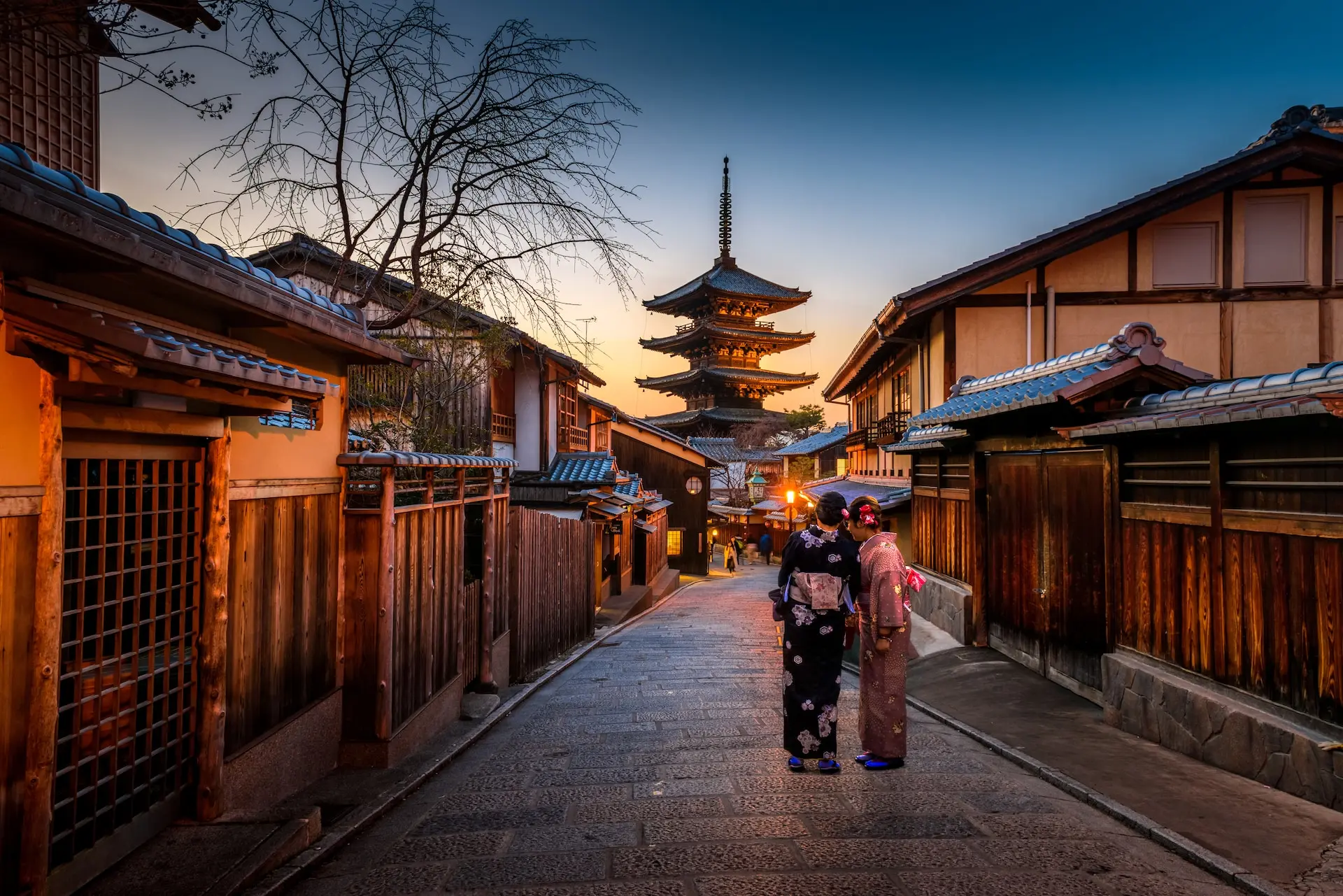
Cycling in Kyoto (A Complete Guide with Route & Map)
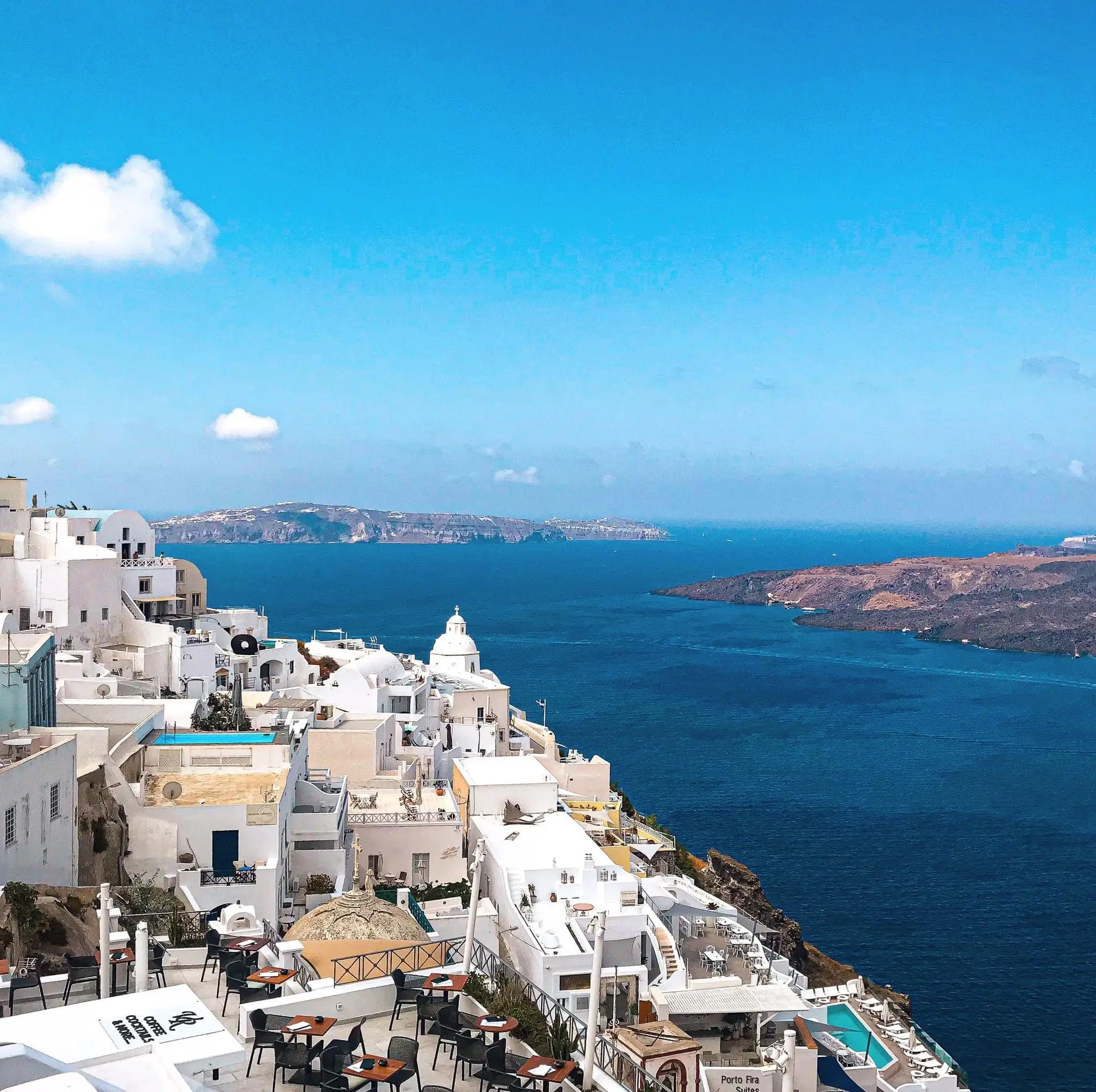
Couchsurfing in Greece | Athens, Santorini & Crete

Leave a Reply Cancel reply
Your email address will not be published. Required fields are marked *

Hi, I’m Brandon
A conscious globe-trotter and an avid dreamer, I created this blog to inspire you to walk the Earth.
Through tales of travel, cultural appreciation, and spiritual insights, let’s dive into the Human Experience.
RECENT ARTICLES

12 Awesome Things to Do in Casco Viejo, Panama

5 Easy Steps to Create a Meaningful Sankalpa
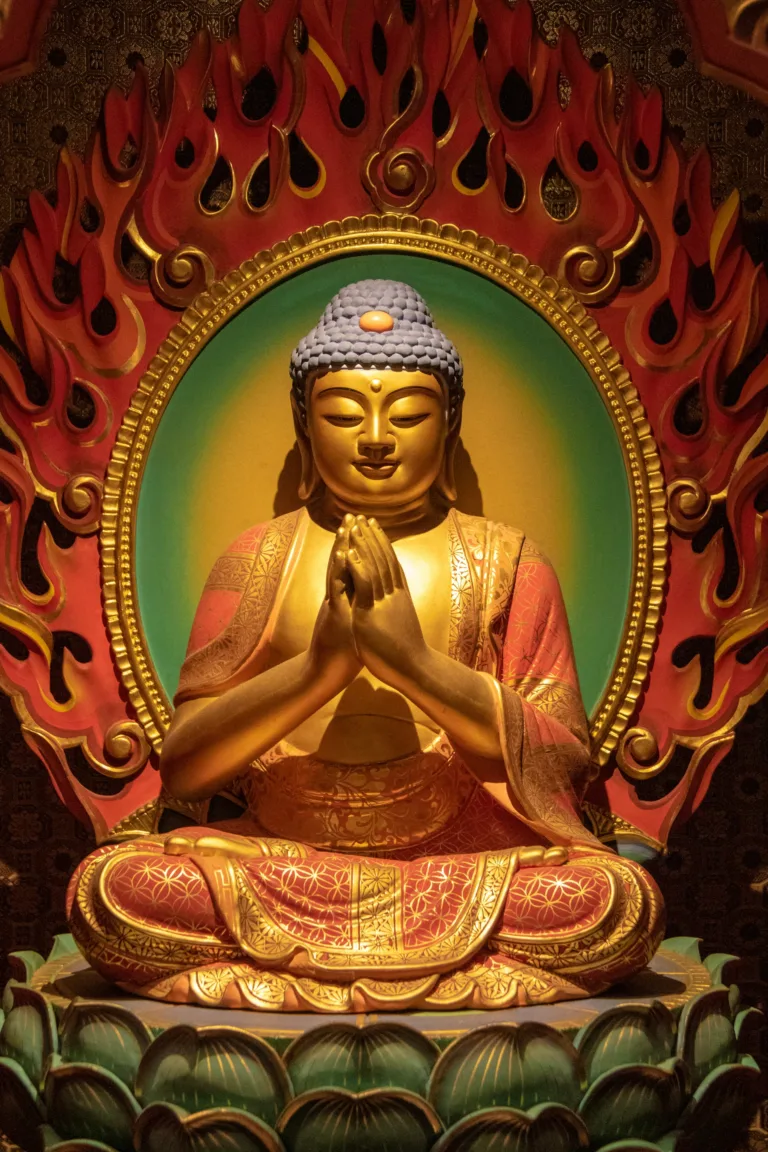
The 4 Stages of Enlightenment in Buddhism | Simplified
Popular articles.
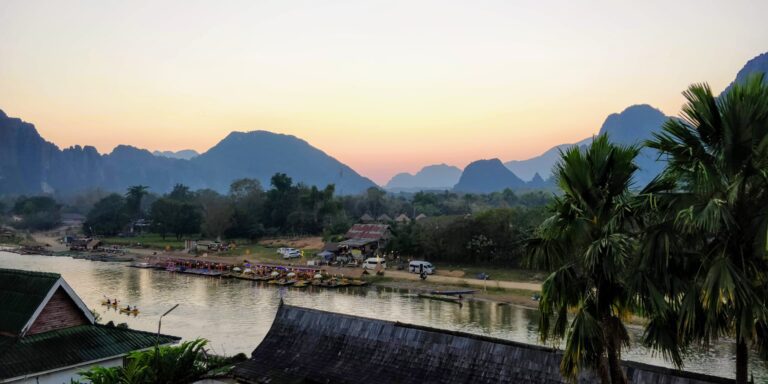
15 Unique Things to Do in Vang Vieng | Ultimate Travel Guide

1 Day Layover in Singapore | Travel Stories
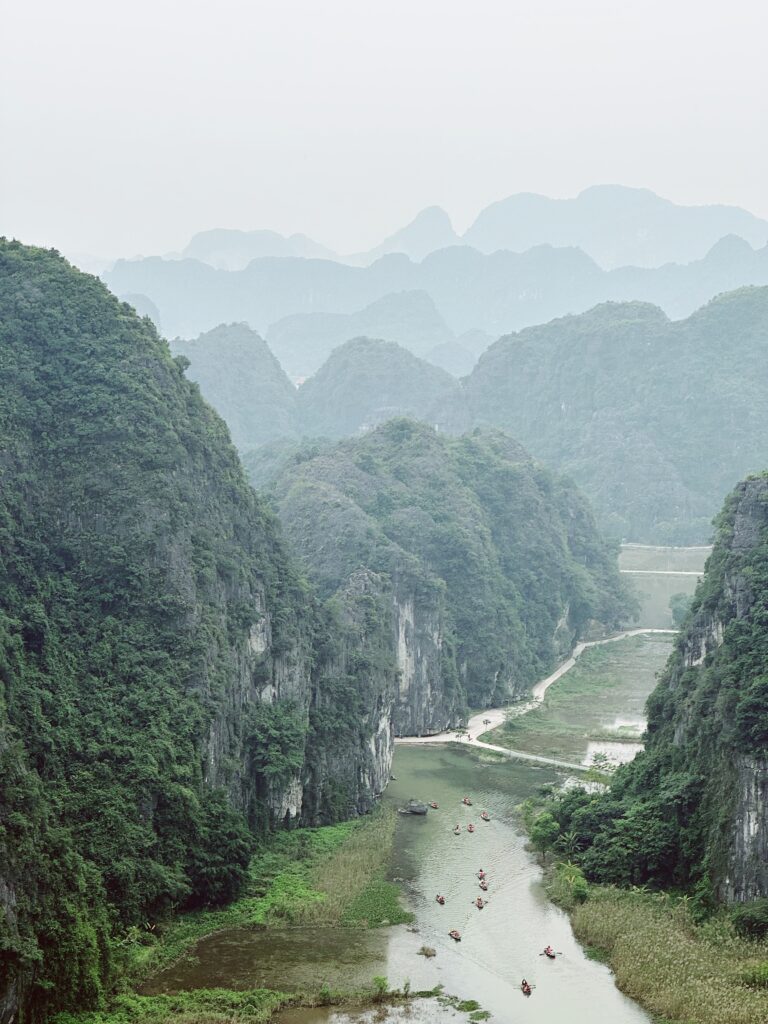
Trang An & Bai Dinh | A Magical Day Trip from Hanoi
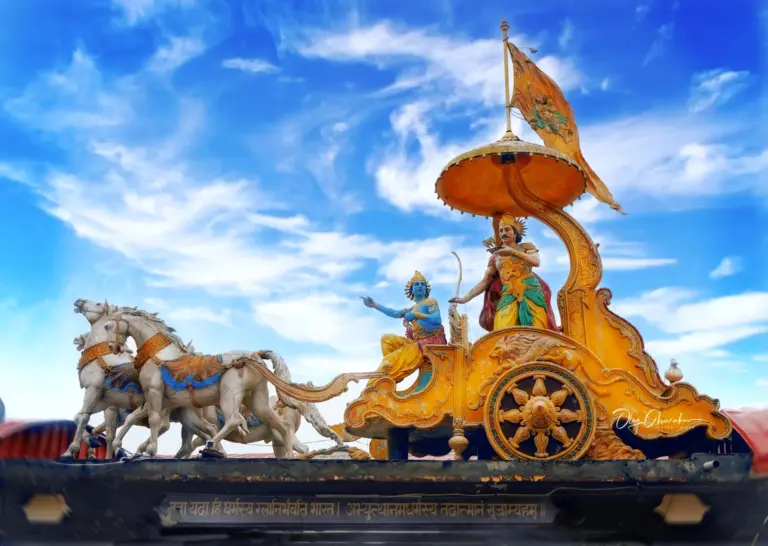
Significance of the Mahabharata | Full Story & Life Lessons
Subscribe for the latest blog drops, photography tips, and curious insights about the world.

© 2023 ALL RIGHTS RESERVED.
- Destinations
- Privacy Policy
Want to get in touch? Feel free to fill in the form below or drop me an e-mail at [email protected]

Journey to the West: Introduction
by That's Mandarin | Oct 11, 2022 | Guest Blogs & Media
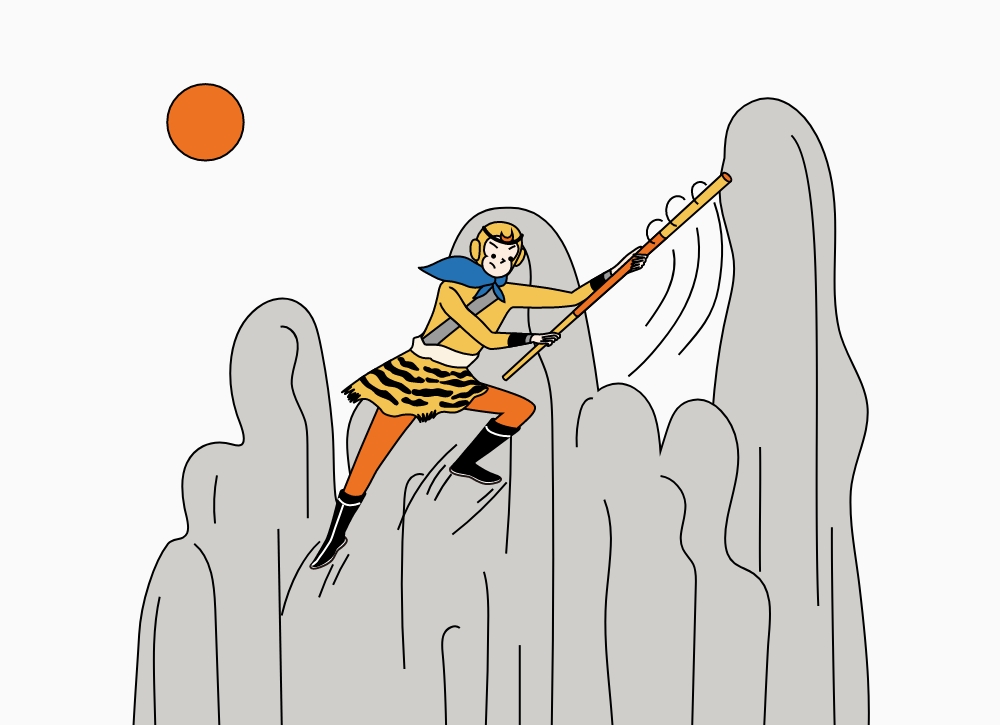
To spark your interest, our guest author Jeff Pepper from Imagin8 Press has shared a brief introduction of the book.
TIP: Scroll the the bottom of the article to discover links to a version of the book written for English-speaking students of Chinese!
Q: What is Journey to the West about?
Journey to the West (西游记, Xīyóu Jì), is a Chinese novel written in the 16th century by Wu Cheng’en (吴承恩, Wú Chéng’ēn).
It is probably the most famous and best-loved novel in China and is considered one of the four great classical novels of Chinese literature. Its place in Chinese literature is roughly comparable to Homer’s epic poem The Odyssey in Western literature. Wikipedia sums up the book’s role perfectly, saying, “Enduringly popular, the tale is at once a comic adventure story, a humorous satire of Chinese bureaucracy, a spring of spiritual insight, and an extended allegory in which the group of pilgrims journeys towards enlightenment by the power and virtue of cooperation.”
Q: Is Journey to the West based on a real story?
The novel’s storyline is loosely based on an actual journey by a Buddhist monk also called Xuanzang who traveled from the city of Chang’an (today’s Xi’an) westward to India in 629 A.D. and returned 17 years later with priceless knowledge and texts of Buddhism.
Q: In short, what is Journey to the West about?
A long time ago, in a magical version of ancient China, the great Tang Empire is ruled by an emperor named Taizong. Due to a mixup involving the wrongful execution of a dragon king, Taizong falls ill, dies, and is dragged down to the underworld. There he comes face to face with the Ten Kings of the Underworld, survives a harrowing journey through hell, and finally escapes with the help of a deceased courtier.
When Taizong returns to the human world he is a changed man. He decides to send a monk to the Western Heaven (that is, India), to visit the Buddha, obtain holy scriptures, and bring them back to the people of the Tang Empire. This task is nearly impossible, requiring the crossing of thousands of miles of wild and dangerous territory. With guidance from the bodhisattva Guanyin, the emperor selects a young monk named Xuanzang.
Xuanzang is a brilliant young man but has a complicated history. In an earlier lifetime centuries before, he was a student of the Buddha but was careless in his studies. Expelled from the Buddha’s temple, he spent the next ten lifetimes meditating and acquiring merit. As an infant in his current lifetime he is nearly killed by bandits, placed in a floating basket by his widowed mother and sent downriver, rescued by a monk, and raised in a monastery. At age eighteen he learns his true history, and goes off to avenge his father’s death.
Later he is chosen by Taizong to undertake the epic journey to the west. Now called Tangseng (“monk from Tang”), he faces a near-impossible task: he must cross hundreds of mountains and thousands of rivers, and survive encounters with a horrifying series of bandits, monsters, demons, ghosts, evil kings, scheming monks, false Buddhas, and much more.
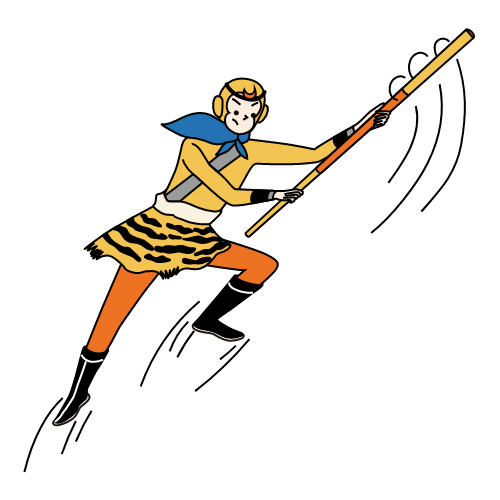
Q: How about the Monkey King and other famous characters?
Tangseng could never survive the journey on his own. Fortunately he acquires three powerful but deeply flawed disciples.
First is the monkey king Sun Wukong (孙悟空, S ūn W ù kōng , his name means “ape awakened to the void”), who he frees from a 500-year imprisonment under a mountain in punishment for creating havoc in heaven.
Second is Zhu Bajie (猪八戒, Zhū Bājiè, “pig of the eight prohibitions”), a gluttonous pig-man who is constantly fighting, and often succumbing to, his desires for food, sex and comfort.
And third is Sha Wujing (沙悟净, Shā Wùjìng, “sand seeking purity”), a reformed man-eating river demon.
All three have been converted to Buddhism by the monk, but they often slip back into their bad habits and cause Tangseng a great deal of trouble. Fortunately they all have great magical powers which come in handy for battling demons and monsters, and saving Tangseng from all sorts of trouble.
The story of this journey is described in this epic novel.

Q: How long is the original book?
The original Journey to the West is a very long book. It contains 100 chapters and is 588,000 Chinese characters long. It uses a very large vocabulary of 4,500 different words, over 90% of which are not included in HSK Levels 1-6, making it quite difficult for most non-native Chinese speakers to read.
The novel is also available in English translation, the best one being by the scholar Dr. Anthony Yu. His version fills four volumes and runs over 2,300 pages.
Q: Is the book suitable for Chinese beginners?
Fortunately for people learning to read Chinese, there is now another way to read this book. My writing partner Xiao Hui Wang and I have spent the last five years writing a series of 31 books that retell the Journey to the West story in language that is accessible to anyone learning to read Chinese at the HSK 3 level. The stories in these books are told in a way that matches the original as closely as possible, but because they are graded readers they are much easier to read. The first book, Rise of the Monkey King, is relatively short and uses just 512 Chinese words. Each book adds more new words and slightly increases the length of the story and complexity of the writing, leading step by step to the longest and most challenging book, Book 31, The Final Trial. All told, the entire series uses about 2,200 different Chinese words excluding proper nouns.
Fortunately, the original novel is not written as a single continuous story, but is broken up into more or less standalone episodes, each one between one and four chapters in length. This makes it possible to read and enjoy any of the 31 graded readers without having to read the ones that came before it.
Each book is written in Simplified Chinese. The books include pinyin, English translation, and a glossary. Free audio versions of each book are available free of charge on YouTube.
Q: Where can I get these books?
A list of all 31 books in the series, along with short descriptions and links to the Amazon product pages and free YouTube audiobooks, can be found on the Imagin8 Press home page, www.imagin8press.com .

by Jeff Pepper
Jeff Pepper ([email protected]) is President and CEO of Imagin8 Press , and has written dozens of books about Chinese language and culture.
Over his thirty-five year career he has founded and led several successful computer software firms, including one that became a publicly traded company. He’s authored two software related books and has been awarded three U.S. patents.
Submit a Comment Cancel reply
Your email address will not be published. Required fields are marked *
Submit Comment
Other posts you might like

Dong Chinese | Great Tool to Learn Chinese
Sep 13, 2022 | Guest Blogs & Media
The Best Tool to Learn MandarinChinese learning has become extremely popular around the world. One of the reasons why so many people are willing to learn Chinese is that China’s rapid economic growth offers numerous job opportunities to people from different...

Business in Chinese and Chinese Culture
Aug 25, 2022 | Guest Blogs & Media
China is among the leading economic giants in the world. Moreover, the economic, political and social stability coupled with favorable government policies and numerous growth opportunities make it an ideal market for international expansion. However, doing business in...

How Is Social Media Slang Changing the Formal Use of Chinese Language?
Aug 3, 2022 | Guest Blogs & Media
Internet culture has created new words that people sometimes use online. This is the case both for the English-language side of the World Wide Web and for any other corner of it – including the Chinese Internet. Users have been creating new slang words that are...
Get 2-week FREE Chinese Classes
Original Price: ¥ 600


- Death cases
- Detention and imprisonment
- Latest Events
- Truth clarification
- Fa-conferences
- Celestial Band
- Media reports
- Worldwide activities
- European Parliament
- United Nation
- Politicians
- Practitioners’ Forum
- Ancient stories
- Historical figures
- Graphic designs
Traditional Chinese Culture: The Story Behind the ‘Journey to the West’

You are welcome to print and circulate all articles published on Clearharmony and their content, but please quote the source.
Related Articles
- Stories from Ancient China: Pangu Creates The World
- Stories Behind Chinese Idioms: ‘Screened by the Peacock Screen’
- Stories from Ancient China: With Ethics Foremost, No Grudges Remain
- Stories from Ancient China: Nu Wa, Creator of Humans
- Stories from Ancient China: Fu Xi and the Origin of Chinese Civilization
- The Plum Blossom: A Symbol of Strength

New Jingwen
- To the Dafa Disciples Attending the Conference in Taiwan 2023-12-09
- How You Should Regard and Act Toward Master’s Family Members 2023-09-13
Persecution in China
News from europe, worldwide news, voice of support, traditional chinese culture.
- falundafa.org
- faluninfo.net
- minghui.org
- pureinsight.org
- upholdjustice.org
- Today's news
- Reviews and deals
- Climate change
- 2024 election
- Fall allergies
- Health news
- Mental health
- Sexual health
- Family health
- So mini ways
- Unapologetically
- Buying guides
Entertainment
- How to Watch
- My watchlist
- Stock market
- Biden economy
- Personal finance
- Stocks: most active
- Stocks: gainers
- Stocks: losers
- Trending tickers
- World indices
- US Treasury bonds
- Top mutual funds
- Highest open interest
- Highest implied volatility
- Currency converter
- Basic materials
- Communication services
- Consumer cyclical
- Consumer defensive
- Financial services
- Industrials
- Real estate
- Mutual funds
- Credit cards
- Credit card rates
- Balance transfer credit cards
- Business credit cards
- Cash back credit cards
- Rewards credit cards
- Travel credit cards
- Checking accounts
- Online checking accounts
- High-yield savings accounts
- Money market accounts
- Personal loans
- Student loans
- Car insurance
- Home buying
- Options pit
- Investment ideas
- Research reports
- Fantasy football
- Pro Pick 'Em
- College Pick 'Em
- Fantasy baseball
- Fantasy hockey
- Fantasy basketball
- Download the app
- Daily fantasy
- Scores and schedules
- GameChannel
- World Baseball Classic
- Premier League
- CONCACAF League
- Champions League
- Motorsports
- Horse racing
- Newsletters
New on Yahoo
- Privacy Dashboard
'Journey to the West': Why the classic Chinese novel's mischievous monkey – and his very human quest – has inspired centuries of adaptations
- Oops! Something went wrong. Please try again later. More content below
One summer afternoon in the late 1980s, my mother and I passed by a tea house on our trip out of town. The crowded building was usually a boisterous place filled with chatter, laughter, and the happy, clacking shuffle of mahjong tiles. At the moment we were passing, however, a great hush came over the teahouse: People were held spellbound by the black-and-white glow of a small TV in a corner, playing an episode of the series “Journey to the West.”
The TV series was adapted from a 16th century Chinese novel with the same title that has undergone numerous adaptations and has captured the imagination of Chinese people to this day. Like many kids in China, I was fascinated by the magic Monkey King, the beloved superhero in the novel, who went through amazing adventures with other pilgrims in their quest for Buddhist scriptures. While I had to quickly walk by the teahouse in order to catch our bus that day, this moment flashed back to me from time to time, making me wonder what made “Journey to the West” so fascinating for people of all ages and backgrounds.
After graduating from college, I embarked on the next chapter of my academic journey in the United States and reconnected with “Journey to the West” from a different perspective. Now, as a scholar with expertise in traditional Chinese literature , I am interested in the development of literary and cultural traditions around the story, including how it has been translated and reimagined by many artists .
While deeply enmeshed in Chinese traditions, the story also resonates with readers from diverse cultures. “Journey to the West” creates shared ground by highlighting the quest for a common humanity, epitomized by its best-loved character, the Monkey King – a symbol of the human mind.
One journey, many stories
Scholars usually trace the beginning of this literary tradition to a Buddhist monk, Xuanzang , who set out on an epic pilgrimage to India in 627 C.E. He was determined to consult and bring back Sanskrit copies of Buddhist scriptures, rather than rely on previous Chinese translations. He did so after nearly 17 years and devoted the rest of his life to translating the scriptures.
The journey has inspired a wide variety of representations in literature, art and religion, making a lasting impact on Chinese culture and society. Legends began to emerge during Xuanzang’s lifetime. Over centuries, they gradually evolved into a distinct tradition of storytelling, often focused on how Xuanzang overcame obstacles with the help of supernatural companions.
This culminated in a 16th century Chinese novel, “Journey to the West.” By this point, the hero of the story had already shifted from Xuanzang to one of his disciples: the Monkey King of Flower-Fruit Mountain, who serves as Xuanzang’s protector. The Monkey King possesses strong magical powers – transforming himself, cloning himself and even performing somersaults that fly him more than 30,000 miles at once.
Despite this novel’s dominance, the broader tradition around “Journey to the West” encompasses a wide variety of stories in diverse forms. The canonic novel itself grew out of this collective effort, and its authorship is still debated – even as it continues to inspire new adaptations.
The deeper journey
Central to all Journey to the West stories is a theme of pilgrimage, which immediately raises a question regarding the nature of the novel: What is the journey really about?
Centuries-long debates about the journey’s deeper message center on the 16th century novel. Traditional commentators in late imperial China adopted a variety of approaches to the novel and underscored its connections with different religious and philosophical doctrines: Confucianism, Daoism, Buddhism and syntheses of those teachings.
For example, all these teachings highlight the role of the “xin” – a Chinese word for mind and heart – in self-cultivation. While Confucian readers might see the plot of “Journey to the West” as the quest for a more moral life, Buddhists might decipher it as an inward journey toward enlightenment.
In the early 20th century, Chinese scholar and diplomat Hu Shi criticized traditional allegorical interpretations, which he feared would make the novel seem less approachable for the general public.
His opinion influenced Arthur Waley’s “Monkey ,” an abridged English translation of “Journey to the West” published in 1942, which has contributed to the canonization of the novel abroad . To a considerable extent, “Monkey” turns the pilgrims’ journey into Monkey’s own journey of self-improvement and personal growth.
Recent scholarship has further underlined religious and ritual connotations of the novel from different perspectives, and debates over the issue continue. But few people would deny that one idea plays a crucial role: the Monkey King as a symbol of the mind.
Mind monkey
There has been a long tradition in Chinese culture that associates the image of a simian creature with the human mind. On the one hand, a monkey often symbolizes a restless mind, calling for discipline and cultivation. On the other hand, an active mind also opens up the opportunity to challenge the status quo and even transcend it, progressing to a higher state.
The Monkey King in the novel demonstrates this dual dimension of the mind . He vividly displays adaptability in exploring uncharted territories and adjusting to changing circumstances – and learning to rely on teamwork and self-discipline, not merely his magic powers.
Before being sent on the pilgrimage, the Monkey King’s quest for self-gratification wreaked havoc in heaven and led to his imprisonment by the Buddha. The goddess Guanyin agreed to give him a second chance on the condition that he join the other pilgrims and assist them. His journey is fraught with the tensions between self-discipline and self-reliance, as he learns how to channel his physical and mental powers for good.
The Monkey King’s human qualities, from arrogance to fear, endow him with universal appeal. Readers gradually witness his self-improvement, revealing a common human quest. They may frown upon how the Monkey King is entrapped within his own ego, yet respect his courage in challenging authority and battling adversity. While his mischievous tricks give a good laugh, his loyalty to the monk Xuanzang and his sense of righteousness make a lasting impression.
Reviewing Waley’s “Monkey” in 1943 , Chinese-American writer Helena Kuo commented of the pilgrims: “Humanity would have missed a great deal if they have been exemplary characters.” Indeed, each one depicts humanity’s quest for a better self, particularly the main character. Monkeying around on the path of life, this simian companion captivates readers – and makes them consider their own journey.
This article is republished from The Conversation , a nonprofit, independent news organization bringing you facts and trustworthy analysis to help you make sense of our complex world.The Conversation has a variety of fascinating free newsletters .
It was written by: Ji Hao , College of the Holy Cross .
Traditional medicine provides health care to many around the globe – the WHO is trying to make it safer and more standardized
From Chinatowns to ethnoburbs and beyond, where Chinese people settle reflects changing wealth levels and political climates
Ancient texts encouraged hope and endurance when they spoke of end times
Ji Hao does not work for, consult, own shares in or receive funding from any company or organization that would benefit from this article, and has disclosed no relevant affiliations beyond their academic appointment.
Recommended Stories
Lions' new uniforms get leaked early, and they find some humor in it.
The Lions' new uniforms got released prematurely.
Indianapolis Star columnist Gregg Doyel apologizes after awkward, uncomfortable interaction with Caitlin Clark
Gregg Doyel flashed a heart sign at Caitlin Clark at her introductory press conference on Wednesday afternoon to kick off an incredibly strange back-and-forth.
Boban Marjanović hilariously misses free throws on purpose to give Clippers fans free chicken
Boban Marjanović is a man of the people.
Rangers' Jack Leiter strikes out first batter he faces but gets roughed up by Tigers in historic MLB debut
Leiter lasted 3 2/3 innings in his MLB debut for the Rangers.
UFC 300: 'We're probably gonna get sued' after Arman Tsarukyan appeared to punch fan during walkout
'We'll deal with that Monday,' Dana White said about Arman Tsarukyan appearing to punch a fan during his UFC 300 walkout.
Nike responds to backlash over Team USA track kits, notes athletes can wear shorts
The new female track uniform looked noticeably skimpy at the bottom in one picture, which social media seized upon.
Rob Gronkowski's first pitch before the Red Sox's Patriots' Day game was typical Gronk
Never change, Gronk.
Trump Media stock jumps for second day as company goes to battle with short sellers
Trump Media is advising investors on ways to prevent their shares from being loaned for a short-interest position.
2024 Shelby Super Snake upgrades the Mustang with insane power and plenty of carbon fiber
Shelby's new Super Snake is a super-limited, one-year-only build that takes the Mustang to a whole new level of performance.
Early MLB season evaluations, which teams are up and which are down, Jack Leiter debut
Jake Mintz & Jordan Shusterman give their early season assessment of all thirty MLB teams at the three week mark, as well as discuss the long-awaited debut of Texas Rangers pitcher Jack Leiter.
76ers' statue for Allen Iverson draws jokes, outrage due to misunderstanding: 'That was disrespectful'
Iverson didn't get a life-size statue. Charles Barkley and Wilt Chamberlain didn't either.
TechCrunch Minute: New Atlas robot stuns experts in first reveal from Boston Dynamics
This week Boston Dynamics retired its well-known Atlas robot that was powered by hydraulics. Then today it unveiled its new Atlas robot, which is powered by electricity. The change might not seem like much, but TechCrunch's Brian Heater told the TechCrunch Minute that the now-deprecated hydraulics system was out of date.
Former Augusta National Golf Club employee charged with stealing millions in Masters memorabilia
The former employee was a warehouse coordinator in charge of Masters memorabilia.
Caitlin Clark reportedly close to 8-figure deal with Nike that includes signature shoe
Clark's endorsement deal with Nike is set to dwarf her WNBA salary.
LSU transfer Hailey Van Lith reportedly headed to TCU
Hailey Van Lith is transferring to TCU after an uneven year at LSU.
UFC 300: Kayla Harrison introduces herself to UFC fans with utter domination of Holly Holm
Harrison was quick to call for a title fight after the win, and it's hard to imagine why she wouldn't get it.
The Scorecard: 10 fantasy baseball hot takes to know through two weeks
Fantasy baseball analyst Dalton Del Don debuts The Scorecard, a weekly series featuring his takes on key MLB player notes.
Tesla layoffs hit high performers, some departments slashed, sources say
Tesla management told employees Monday that the recent layoffs -- which gutted some departments by 20% and even hit high performers -- were largely due to poor financial performance, a source familiar with the matter told TechCrunch. The layoffs were announced to staff just a week before Tesla is scheduled to report its first-quarter earnings. The move comes as Tesla has seen its profit margin narrow over the past several quarters, the result of an EV price war that has persisted for at least a year.
Mock Draft Monday with Daniel Jeremiah: Bears snag Odunze, Raiders grab a QB
It's another edition of 'Mock Draft Monday' on the pod and who better to have on then the face of NFL Network's draft coverage and a giant in the industry. Daniel Jeremiah joins Matt Harmon to discuss his mock draft methodology, what he's hearing about this year's draft class and shares his favorite five picks in his latest mock draft.
How Victor Wembanyama's rookie season ranks in NBA history
Victor Wembanyama's rookie NBA season is finished. The San Antonio Spurs will sit him in Sunday's regular-season finale. Where does his first season rank among the league's greats?
Subscribe to our newsletter

The Hit New Film Pushing Chinese Sci-Fi Into Unexplored Territory
In Kong Dashan’s hit new movie “Journey to the West,” the aliens aren’t hiding in the corn fields of the U.S. Midwest. They’re lurking in the villages of northern China.
The film has become a sensation on the festival circuit in recent months by offering audiences something rarely seen before: a science fiction tale with a distinctly local flavor.
Tang Zhijun, a middle-aged magazine editor from Beijing, travels to a remote village to investigate the mass sighting of an unidentified flying object. There, he meets a local poet who says the answer to the mystery lies at a distant mountain.
As the tension mounts, the pair embark on a road trip that turns into a journey of self-discovery. It’s a quirky, often comic narrative that echoes the original “Journey to the West,” the classic Chinese novel about the monk Tang Sanzang’s quest to retrieve the Buddhist scriptures from India.
Last October, the film scooped an unprecedented four awards — including best film — at the Pingyao International Film Festival, China’s leading platform for independent cinema. It has since played overseas at the International Film Festival Rotterdam and the Osaka Asian Film Festival to more acclaim.
With a Chinese theatrical release pending, film industry insiders say the buzz building around the feature is palpable. Kong, the film’s 32-year-old director, says the movie’s low-budget, down-to-earth style has proved to be an asset.
“We have given people science fiction within a story that might feel familiar to aspects of their own lives,” says Kong. “That is something new.”
Leading figures in China’s science fiction scene have hailed “Journey to the West” as a step forward for the industry — and a sign it’s finally ready to step out of the shadow of star author Liu Cixin.
Chinese sci-fi has skyrocketed in popularity in recent years, propelled by the breakout success of Liu’s “The Three-Body Problem.” The novel, which transcends time and space as it charts humanity’s war against an alien civilization, became a global sensation after winning the prestigious Hugo Award in 2015.
The Chinese government, once wary of sci-fi movies, began to actively embrace the genre as a soft power tool over the following years. This has opened the door for a string of big-budget science fiction productions, many of them drawing inspiration from Liu’s work.
In 2019, “The Wandering Earth” — an adaptation of a Liu novella about a group of astronauts trying to save the planet from destruction — became a box office smash, generating 4.4 billion yuan (then $638 million) in ticket sales and winning a slew of local awards.
Other Chinese sci-fi films to attract big audiences that year included the wacky comedy “Crazy Alien” — also based on a story by Liu — and the special effects-heavy alien invasion movie “Shanghai Fortress.”
Though the pandemic has caused major disruptions to film production in China, a big-budget sequel to “The Wandering Earth” is set for release in 2023. Streaming giants Tencent and Netflix, meanwhile, are currently putting the finishing touches on a TV adaptation of “The Three-Body Problem.”
Liu continues to loom large over China’s sci-fi scene. His style of fiction — speculative, epic in scale, and informed by hard science — has influenced an entire generation of Chinese writers.
“Currently, I see a lot of physics, astronomy, and space — natural science stuff,” says Chen Qiufan, a leading sci-fi author and honorary president of the Chinese Science Fiction Writers’ Association. “It’s pretty much like America back in the ’50s. Like (Isaac) Asimov, Arthur C. Clarke, those ‘golden-age’ authors.”
But there are signs this is starting to change. Some creators are starting to experiment with a folksier style of sci-fi — one that draws more heavily on China’s cultural heritage and current affairs. For Chen, it’s part of a movement to explore “what are the Chinese characteristics of sci-fi.”
“Maybe in the future, there’ll be something different,” he says. “I might also do some exploration myself to connect with some ancient Chinese philosophy and mythology … so the work is using a different kind of language.”
Filmmaker Kong appears to be ahead of the game. “Journey to the West” turns on the travails of its relatable main character and his search for answers: not only about what might lie in the great beyond, but also about how his own life has panned out.
It’s a work that comes steeped in the traditional themes found in science fiction, such as the search for redemption and humanity’s fascination with the possibility of extra-terrestrial life. Kong says his inspiration came from the hours he spent poring over sci-fi magazines as a child growing up in 1990s Shandong, a province in eastern China.
“My generation all grew up reading science fiction magazines, books about unknown mysteries,” says Kong. “If we think carefully about what aliens represent, it’s actually another kind of system, totally different from human beings’ existence.”
As opposed to Liu Cixin, whose work is often compared to the “golden age” sci-fi authors of the 1940s and ’50s, Kong’s work shows faint echoes of more recent classics. The central character — played by veteran actor Yang Haoyu — is fixated with outer space while his real life on terra firma falls apart, much like the protagonist in Steven Spielberg’s 1977 masterpiece “Close Encounters of the Third Kind.” As in that film, too, there’s a journey of discovery that’s as personal as it is otherworldly.
But there are also sly nods to arguably the greatest road trip of all — the one taken by Tang Sanzang and his three disciples in the original “Journey to the West.” In Kong's feature, however, the characters’ quest for fulfillment is rooted in a firmly contemporary setting.
“In both that book and my film, you have characters looking for the ultimate answers in life,” says Kong. “I think this comes from the influence of ‘Journey to the West’ subconsciously. It’s a road trip, but inside it’s also his own mental journey. I think it’s necessary to have this kind of journey in science fiction.”
The hope is that more Chinese filmmakers find opportunities to experiment with science fiction over the next few years. Chen, the author, says the outlook for Chinese sci-fi has never looked better, especially given the government’s embrace of the genre.
“There have been themes of science fiction in China for about 100 years, but they’ve not been continuously developed because of wars or due to political reasons,” says Chen. “But (now) seems to be a golden age because it’s top-down. We have got a lot of support from the government and, also, the market is ready.”
Chinese authorities are pouring resources into science -fiction-related projects. Next year, the southwestern city of Chengdu will host the influential World Science Fiction Convention. Officials have greenlit a massive $8 billion Paramount Park theme park in Kunming, another city in southwest China, which will include a zone themed around the “Star Trek” franchise.
In 2019, the government also helped launch the Chinese Science Fiction Academy at Chengdu’s Sichuan University, a facility whose stated mission is to develop “a sci-fi theoretical system with Chinese characteristics.” Last year, researchers estimated that China’s sci-fi industry was worth a massive 36.3 billion yuan in the first half of 2021.
The scene is also benefitting from the growing demand for sci-fi movies among young Chinese, Chen says. Unlike previous generations, who often didn’t have easy access to science fiction, Chinese millennials like Kong grew up immersed in sci-fi culture.
“So many in the younger generation are so passionate about sci-fi as a genre, no matter if it’s literature, movies, or video games,” says Chen. “I think that’s been a fundamental change, because in the ’80s, or even in the ’50s and ’60s, maybe people weren’t ready yet for science fiction.”
Editor: Dominic Morgan.
(Header image: A still from the film “Journey to the West.” From Douban)

- Terms Of Use
- Privacy Policy

- The Canonical Works The Four...
The Four Classic Novels of Chinese Literature

Water Margin, Journey to the West, Romance of the Three Kingdoms and Dream of the Red Chamber; these four novels form the core of Chinese classical literature and still inform modern culture. As with Dante or Shakespeare in Europe, they are touchstones to which Chinese literary culture persistently returns to discover new relevance and fresh insight.

Dating from the Ming and Qing dynasties, these four novels are the bedrock of Chinese literary culture. Their influence has spread across Asia to inform elements of Japanese, Korean and South East Asian mythology. The writing and dissemination of these four works marked the emergence of the novel form in China as a counterpart to more refined philosophical and poetic works. The more expansive form of the novel allowed for a synthesis of the historical and the mythological, whilst also developing along more accessible narrative lines. These works thus marked a limited but notable democratization of literature which is perhaps most evident in their use of vernacular Chinese, rather than the Classical Chinese which had previously dominated. These four works also revealed the novel’s potential to embrace a multitude of perspectives, and to allow for irony; this permitted writers to voice previously suppressed critiques about the ruling order, whilst also expressing the vast multitude of voices which made up the Chinese populace.

Water Margin

Journey to the West
Perhaps the most influential of the four classic novels of Chinese literature, and certainly the most widely known beyond China’s borders, Journey to the West was written in the 16th century by Wu Cheng’en. It depicts the pilgrimage of the Buddhist monk Xuanzang to India, and his resultant travels through the Western provinces of China, accompanied by his three disciples. Whilst the framework of the story is based on Buddhism, the novel draws on a host of Chinese folk tales and mythology, as well as pantheism and Taoism to create its fantastical cast of characters and creatures. These creatures include various demons who Xuanzang encounters along his travels, and a variety of animal-spirits who assume human form. This latter category includes the three disciples, who are characterised as a monkey, a pig and a river ogre, and who are bound to Xuanzang as they attempt to atone for their past sins. An early and partial English translation of Journey to the West by Arthur Waley was entitled Monkey and focused on the exploits of this character, which has also been the case with many subsequent adaptations. Journey to the West was an early example of the Shenmo genre, which incorporated a range of fantastical fiction focusing on the exploits of gods or demons, and was very prominent in the rise of vernacular Chinese literature during the Ming dynasty, as the centuries old folk tales were written and disseminated for the first time. Journey to the West was the most famous example of the Shenmo, and remains omnipresent in China, in a huge variety of adaptations. The novels continued relevance is a reflection of its paradigmatic qualities, as with the Greek myths of Homer, it set down the ancient myths of Chinese culture for the first time, and remains a repository for those myths even today.

Romance of the Three Kingdoms
A historical novel which recounts the political intrigue and deceit within the Three Kingdoms period of Chinese history, Romance of the Three Kingdoms combined history, legend and mythology to tell the tumultuous story of this era. This epic tale was written by Luo Guanzhong and incorporates hundreds of characters, weaving a multitude of complicated plotlines in its portrayal of the disintegration of a unified China into three warring kingdoms, the three states of Cao Wei, Shu Han, and Eastern Wu, and their eventual reconciliation and unification. Romance of the Three Kingdoms remains hugely popular in China, and has had a profound influence on national identity, since it dramatises one of the foundational myths of the nation; that of its disintegration and unification. The belief in the cyclical nature of history is expressed succinctly in the opening line of the novel: ‘It is a general truism of this world that anything long divided will surely unite, and anything long united will surely divide’. The complexity of the political world it depicts, as well as its epic length and density, can make reading Romance of the Three Kingdoms a challenge. However it remains a uniquely potent work, which informs Chinese political consciousness event today in a way that rivals Shakespeare’s place in English self-identity.

Dream of the Red Chamber
Written in the mid-18th century during the Qing dynasty, Dream of the Red Chamber was the last of the four great novels of Chinese literature to gain prominence. It is a semi-autobiographical work which focuses on the financial and moral decay of author Cao Xueqin’s family and by extension the Qing dynasty. Recognized for its formal beauty and innovation, Dream of the Red Chamber has spawned a scholarly field of its own, ‘Redology’, which is still a thriving academic subject in China. The novel is markedly more nuanced and precise than its fellow classics, and it offers an incredibly detailed rendering of the life of 18th century Chinese aristocracy, paying particular attention to the complexities of social conventions in this esoteric world. The novel is thus a repository for those interested in Chinese culture, granting readers an insight into the religious, social and political world of upper class China. It also offers insight into a wide variety of aspects of Chinese culture, from medicine to mythology and art, all of which continue to inform contemporary culture in China.
Since you are here, we would like to share our vision for the future of travel - and the direction Culture Trip is moving in.
Culture Trip launched in 2011 with a simple yet passionate mission: to inspire people to go beyond their boundaries and experience what makes a place, its people and its culture special and meaningful — and this is still in our DNA today. We are proud that, for more than a decade, millions like you have trusted our award-winning recommendations by people who deeply understand what makes certain places and communities so special.
Increasingly we believe the world needs more meaningful, real-life connections between curious travellers keen to explore the world in a more responsible way. That is why we have intensively curated a collection of premium small-group trips as an invitation to meet and connect with new, like-minded people for once-in-a-lifetime experiences in three categories: Culture Trips, Rail Trips and Private Trips. Our Trips are suitable for both solo travelers, couples and friends who want to explore the world together.
Culture Trips are deeply immersive 5 to 16 days itineraries, that combine authentic local experiences, exciting activities and 4-5* accommodation to look forward to at the end of each day. Our Rail Trips are our most planet-friendly itineraries that invite you to take the scenic route, relax whilst getting under the skin of a destination. Our Private Trips are fully tailored itineraries, curated by our Travel Experts specifically for you, your friends or your family.
We know that many of you worry about the environmental impact of travel and are looking for ways of expanding horizons in ways that do minimal harm - and may even bring benefits. We are committed to go as far as possible in curating our trips with care for the planet. That is why all of our trips are flightless in destination, fully carbon offset - and we have ambitious plans to be net zero in the very near future.
Culture Trip Spring Sale
Save up to $1,100 on our unique small-group trips limited spots..

- Post ID: 102501
- Sponsored? No
- View Payload
{{userData.name}} Verify
Message All Messages
Wealth Balance、积分管理
Promotion Promotion with Rewarded
Task Daily Tasks
VIP Member Purchase VIP member
Verify Apply for certification
Blacklist Blacklisted Users
My Order View My Orders
Settings Editing Personal Profile
- Comprehensive News
- Education News
- Business News
- Economics News
- Sports News
- Technology News
- Chinese Embassies
- Foreign Embassies
- 24 Solar Terms
- Chinese Dynasties
- Chinese Festivals
- 56 Nationalities in China
- Top 100 Attractions in China
- Top 100 Books in China
- Top 100 Celebrities in China
- Top 100 Cities in China
- Top 100 Dishes in China
- Top 100 Movies in China
- Top 100 Oriental Paintings
- Top 100 Songs in China
- Top 100 Universities in China
- Course Materials
- HSK Materials
Journey to the West 西游记
The first colorful romantic mythological novel in ancient China
Chinese Name : 西游记 English Name : Journey to the West Author : Wu Cheng ‘en 吴承恩 Originally Published : In 1592 (Ming Dynasty 明朝) Genre : Novel

Brief Introduction of Journey to the West
Journey to the West西游记 is the first colorful romantic mythological novel in ancient China written by Wu Cheng ‘en 吴承恩 in the Ming Dynasty 明朝. Together with the Romance of The Three Kingdoms 三国演义 , Water Margin 水浒传 and Dream of the Red Chamber 红楼梦 , it is one of the Four Great Classical Novels in China 中国四大名著 .
It has 100 episodes in all. It tells the story of Sun Wukong 孙悟空, Zhu Bajie 猪八戒, Sha Wujing 沙悟净 together with a white horse escort Tang Xuanzang 唐玄奘 to the West to obtain authentic scriptures, and they encounter many demons and difficulties all the way, through 81 difficulties, get back the true scriptures, the final correction of the fruit of the story. It profoundly describes the social life of the Ming people.
A stone monkey was born in Huaguo Mountain 花果山 in The Aolai kingdom 傲来国 of East China. The stone monkey later became a disciple of Bodhi Patriarch 菩提祖 who named him Sun Wukong. Sun Wukong learned seventy-two changes and had the ability to connect to heaven.
The Jade Emperor 玉皇大帝 sent the Lord Taishang 太上老君 to invite Sun Wukong to be an official in heaven. Later, because of the low position granted by the Jade Emperor, Sun Wukong caused havoc in heaven and was trapped in the alchemy furnace for 49 days. After that, Sun Wukong kicked over the furnace and became the golden eye and fire eye. Tathagata Buddha 如来佛祖 saw the situation out of control, so the great sage suppressed under the Five Elements Mountain 五指山.
.jpeg)
Five hundred years later, Xuanzang was chosen by Avalokitesvara bodhisattva 观音菩萨 to go to the West to obtain authentic scriptures to save all living beings. Guided by Avalokitesvara, Sun Wukong became a disciple of Xuanzang, and the two of them set foot on the journey of buddhist sutras 佛经. Later they met Zhu Bajie, Sha Wujing and white horse dragon. Master and apprentice a few people all the way to break through difficulties, get rid of all kinds of demons, finally successful arrival in the west, complete the task of learning scriptures.
.jpeg)
The story clearly expresses the idea that in order to realize a good ideal and accomplish a great undertaking, there must be many difficulties, and these difficulties must be overcome. To a large extent, the story of the Journey to the West reflects the spirit of the Chinese people to overcome difficulties and forge ahead bravely, as well as the desire and confidence of the Chinese people to destroy all evil forces in society and conquer nature through the plot of fantasy.
.png)
Author of Journey to the West
Wu Cheng ‘en (c. 1500 -1583) was born in Shanyang County 山阳县, but his ancestral home was In Anhui Province 安徽省. He was an outstanding novelist in The Ming Dynasty. He was clever and well-read since childhood, especially fond of fairy tales.

In 1529, Wu Cheng ‘en went to study in Longxi Academy 龙溪学院 founded by Ge Mu 葛木 and he got Ge Mu appreciated.
In 1551, Wu Cheng ‘en took over as governor of Xinye County 新野县, Henan province 河南省.
In 1556, he became the small officer of Changxing County 长兴县 in Zhejiang Province 浙江省.
In 1558, due to false accusations, he resigned his official post and returned to his hometown. In his later years, he made a living by selling articles. He lived about 82 years old and died in poverty.
His frustration in officialdom and his difficulties in life deepened his understanding of the feudal imperial examination system and the dark social reality, and prompted him to express his inner dissatisfaction and anger in the form of strange stories.
Excerpts From Journey to the West
树大招风风撼树,人为名高名丧人。 Big trees are easy to catch the wind, the wind will shake the trees; Too much fame kills people.
打虎还得亲兄弟,上阵须教父子兵。 In the face of some important things, it is also necessary to hand over some trustworthy people.
世上无难事,只怕有心人。 As long as the will is strong, there is no difficulty that cannot be overcome.
Evaluation of Journey to the West
Journey to the West is full of changes and absurdity. Centered on Sun Wukong, he is omnipotent in heaven and earth. The only thing he feared was the spell. Xie Zhaozhe 谢肇淛
Journey to the West is a funny and mythological novel of great interest. It doesn’t mean anything subtle, it’s just a bit of abusive cynicism. This kind of cynicism is also very clear, it is not hidden, we do not need to deep. Hu Shih 胡适
Although the book is written in the ghosts and gods, but in fact are in line with the worldly wisdom, well versed in social conditions. It is for this reason that Journey to the West stands out as one of the four great works of literature among many ghosts and spirits. Lu xun 鲁迅
Water Margin 水浒传
2022-4-22 11:07:52
The Unofficial History of the Scholars 儒林外史
2022-4-27 9:11:45
All resources and files posted on this website are for learning and research purposes only; The contents shall not be used for commercial or illegal purposes, otherwise, all law consequences shall be borne by users. The information of this site is collated by users from the network, and the copyright dispute has nothing to do with this site. If there is any infringement of your rights and interests, please contact us by email: [email protected] .
Login or sign up to leave a comment
Scan to open current page
Leaderboard

- Find a Library
- Browse Collections
- The Journey to the West in Easy Chinese
ebook ∣ The Complete Novel Retold With Limited Vocabulary, in Simplified Chinese, Pinyin and English · Journey to the West
By jeff pepper.
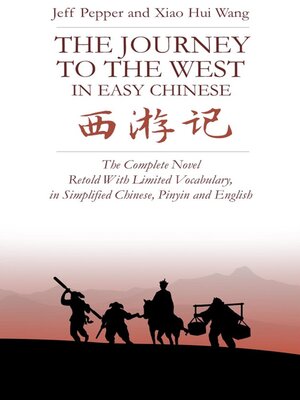
Add Book To Favorites
Is this your library?
Sign up to save your library.
With an OverDrive account, you can save your favorite libraries for at-a-glance information about availability. Find out more about OverDrive accounts.
Journey to the West
Jeff Pepper
Imagin8 Press LLC
18 November 2022
Find this title in Libby, the library reading app by OverDrive.

London Flagship Store
F1 2024 insider's guide no. 05 – china.

China waited a long time for a Formula One Grand Prix to showcase itself to the world, and to supercharge its fast-growing domestic auto manufacturing industry too. In 2004 their wishes were granted and the Hermann Tilke-designed track in Shanghai hosted its first Grand Prix. Drama was never far away and due to COVID-19, the race was off in 2020, 21, 22 and even last year. This year it is back and the excitement is palpable in China. Fans of the Aston Martin Aramco Formula One® Team will be cheering on Fernando and Lance as they aim to keep up with their encouraging start to the season.
China: The country of the future
China’s recent economic boom has made it look so futuristic. Shanghai’s forest of skyscrapers lit up at night is a jaw-dropping sight. The Oriental Pearl TV Tower stands at the centre of this new development replicating a space rocket rather than a building. MAD have made a name for themselves creating expressive cultural institutions like Harbin’s Octopus Opera House. Their new Beijing Philharmonic Hall is due to open very soon. New airports like those at Beijing and Shenzhen are huge in scope and architecturally ambitious. High-speed train lines criss-cross the country with enormous new stations like Guangzhou. And don’t miss Shanghai’s sci-fi Maglev, a super high-speed monorail powered by magnets that whisks you from the airport to Downtown.
.png?v=1713192049091&options=w_{width},h_{height})
How to find joy in the journey?
Once highly distinct and separate, Hong Kong and Macau were very much independent of each other, for centuries the only link was by boat across the Pearl River Delta. That all changed six years ago when the eye-wateringly ambitious Hong Kong-Zhuhai-Macau Bridge opened connecting the two regions. Now you can drive a car from the front door of the HSBC World Headquarters in Hong Kong straight into the former Portuguese colony of Macau with its Lusophone vibe and Lisbon-esque church architecture. The monumental Bridge gives unparalleled views of the Chinese coast and even dips into a tunnel in the middle of the sea by The Oresund crossing between Sweden and Denmark. A truly unforgettable drive.
.png?v=1713192105210&options=w_{width},h_{height})
What’s new in China?
Shanghai’s Bund waterfront was once the teeming, steaming centre of an incredibly productive industrial revolution. Now China’s biggest metropolis is reinventing its river with fascinating ideas dreamt up by global architects. The West Bund Art Centre was carved out of a former aerospace factory by architect Liu Yichun and today is home to all sorts of art. Modern Dutch masters MVRDV are currently at work creating something similar nearby. Their Gate M West Bund Dream Center in a former cement plan will soon bring another cultural institution to the area. And several new green spaces have claimed back the riverside from its industrial past. The Sanlin Valley Ecopark from TLS Landscape Architects has created an attractive and environmentally sustainable parkland for people and animals by the Bund.

Where should I go next?
A short hop from Shanghai is the beautiful island of Taiwan - once known as Formosa. Today’s Taiwan is a wonderful, safe and democratic haven where you can enjoy culture, ancient temples, the high tech modernism of Taipei with its huge Taipei 101 skyscraper and great night market food. For relaxing times head to Sun Moon Lake or Taroko Gorge where hiking and swimming in beautiful nature will reinvigorate the soul. And to finish, shoot down to Kenting National Park where you can ride locally-built Giant bikes along the shore and sit under dreamy, swaying palm trees on tropical beaches enjoying barbecued fish and cold beers.
-(1).png?v=1713192217738&options=w_{width},h_{height})
The Globe-Trotter x Aston Martin Aramco Formula One® Team partnership celebrates a shared commitment to craftsmanship, innovation, and heritage; bringing together the timeless style of Globe-Trotter’s handcrafted luggage and the cutting-edge design and performance of the Aston Martin Aramco Formula One® Team.
Newsletter Signup
Sign up for our exclusive newsletter to unlock insider access, travel inspiration, VIP events, and expert tips.
Featured items in this article

Aston Martin Aramco F1® Team AMR24 Small Attaché

Aston Martin Aramco F1® Team AMR24 Miniature Case

Aston Martin Aramco F1® Team AMR24 Large Check-In - 4 Wheels

Aston Martin Aramco F1® Team AMR24 Carry-On - 4 Wheels
Similar articles – we think you'll love.

F1 2024 Insider's Guide No. 04 – Japan

F1 2024 Insider's Guide No. 03 – Melbourne

F1 2024 Insider's Guide No. 02 – Saudi Arabia

Worldwide shipping
Complimentary on all orders

Secure payments
For all major credit/debit cards

Up to five years after purchase

Easy returns
Free returns for up to 28 days
Select Shipping Destination
You currently have no items in your bag

IMAGES
VIDEO
COMMENTS
Journey to the West (Chinese: Xiyou ji 西遊記) is a Chinese novel published in the 16th century during the Ming dynasty and attributed to Wu Cheng'en.It is regarded as one of the greatest Classic Chinese Novels, and has been described as arguably the most popular literary work in East Asia. Arthur Waley's 1942 abridged translation, Monkey, is known in English-speaking countries.
Journey to the West, foremost Chinese comic novel, written by Wu Cheng'en, a novelist and poet of the Ming dynasty (1368-1644). The novel is based on the actual 7th-century pilgrimage of the Buddhist monk Xuanzang (602-664) to India in search of sacred texts. The story itself was already a part of Chinese folk and literary tradition in the form of colloquial stories, a poetic novelette ...
The famous Taiwanese cartoonist Tsai Chih-Chung's comic version Journey to the West, first published in 1987, is an amusing way to introduce how the story was adapted to mock the popular social practices and perspectives during the early days of the economic reform. 13 The inclusion of this text allows instructors to remind students why The ...
Four of the characters from 'Journey to the West,' made in the clay figurine technique of Huishan, China, including the Monkey King on the right.
China has the largest Buddhist population in the world, and the religion is tacitly supported by the Communist government. Sections. 7.1 Journey to the West - Getting Started. ... Unit 7 Journey to the West. The powerful and mischievous Stone Monkey King brings chaos to heaven and earth. Freed from a mountain prison in order to guard a ...
Journey to the West is a fictionalized account of the legends surrounding the 16-year pilgrimage of the Buddhist monk Xuánzàng (602-664) to India during the Táng dynasty, to obtain Buddhist religious texts (sutras).Xuánzàng reached India after experiencing innumerable trials and hardships. He lived there for more than a decade, studying classics of Buddhism and Indian culture at Nalanda ...
Journey to the West, or Xiyouji (西游记), is a late Ming dynasty (1368-1644) novel of comedic fantasy based on the religious pilgrimage of a 7th-century Chinese Buddhist monk to India in search of religious scripts. Published in the late 16th century, with the earliest extant edition dating back to 1592, Journey to the West is a hundred-chapter novel attributed to the author Wu Cheng'an.
Journey to the West. Journey to the West is one of Chinese Literature's Four Classic Novels. It was published in the 1590s. The novel is a fictionalised account of the mythologized legends around the Buddhist monk Xuanzang's pilgrimage to India (known as the Western Regions) during the Tang dynasty in order to obtain Buddhist religious texts ...
The Journey to the West was regarded in China as one of the great masterpieces of its era. Since the publication in 1592 you find it in any number of adaptations, comic books, film, TV series, stage dramas, rewritings, abridgements. Hwang: The thing that kind of pleasantly surprised me the first time I encountered Journey to the West is really ...
One of its main results is the fictional narrative of "Journey to the West," a Chinese novel published in the 16th century but based on much earlier Song dynasty era legends. The hero of the ...
The "Journey to the West" is deeply entwined with the real-life travels of Xuanzang (602-664 CE), whose pilgrimage to India and back took 17 years, a journey undertaken to obtain authentic Buddhist scriptures.. Wu Cheng'en's fictionalized account, however, does more than narrate a religious quest; it weaves a rich story of Chinese myths, Taoist and Buddhist philosophy, and satirical ...
Journey to the West (西游记, Xīyóu Jì), is a Chinese novel written in the 16th century by Wu Cheng'en (吴承恩, Wú Chéng'ēn). It is probably the most famous and best-loved novel in China and is considered one of the four great classical novels of Chinese literature. Its place in Chinese literature is roughly comparable to Homer ...
Set during the Tang Dynasty in China, Journey to the West describes the adventures of a monk and his three disciples—a monkey, a pig, and an ogre—on their way to India to find and bring back sacred Buddhist scriptures. The monkey and the pig provide much of the humorous action in the novel. The third disciple, a river ogre named Sandy, is a ...
The deeper journey. Central to all Journey to the West stories is a theme of pilgrimage, which immediately raises a question regarding the nature of the novel: What is the journey really about? Centuries-long debates about the journey's deeper message center on the 16th century novel. Traditional commentators in late imperial China adopted a ...
Kong Dashan's award-winning feature "Journey to the West" is generating huge buzz in China — and showing there is more to Chinese sci-fi than Liu Cixin. In Kong Dashan's hit new movie "Journey to the West," the aliens aren't hiding in the corn fields of the U.S. Midwest. They're lurking in the villages of northern China.
1 October 1986. ( 1986-10-01) Journey to the West is a Chinese television series adapted from the classic 16th-century novel of the same title. The first 11 episodes of the series were first broadcast on CCTV in China on 1 October 1986. The series became an instant classic in China and was praised for being one of the most original and faithful ...
Perhaps the most influential of the four classic novels of Chinese literature, and certainly the most widely known beyond China's borders, Journey to the West was written in the 16th century by Wu Cheng'en. It depicts the pilgrimage of the Buddhist monk Xuanzang to India, and his resultant travels through the Western provinces of China, accompanied by his three disciples.
Zhu Bajie (Chinese: 豬八戒; pinyin: Zhū Bājiè; Wade-Giles: Chu 1 Pa 1-chieh 4), also named Zhu Wuneng (he has two Buddhist Dharma names, one, "Wuneng" (悟能) given to him by the bodhisattva, Guanyin, and one, "Bajie" (八戒) given to him by Tang Sanzang/Tripiṭaka), is one of the three helpers of the aforementioned-Tang Sanzang and a major character of the 16th century novel ...
Journey to the West西游记 is the first colorful romantic mythological novel in ancient China written by Wu Cheng 'en 吴承恩 in the Ming Dynasty 明朝. Together with the Romance of The Three Kingdoms 三国演义 , Water Margin 水浒传 and Dream of the Red Chamber 红楼梦 , it is one of the Four Great Classical Novels in China ...
Journey to the West is probably the most famous and best-loved novel in China and is considered one of the four great classical novels of Chinese literature. Its place in Chinese literature is roughly comparable to Homer's epic poem The Odyssey in Western literature. Wikipedia sums up the book's role perfectly, saying, "Enduringly popular, the ...
Books. Journey to the West. Wu Cheng'en. Real Reads, 2011 - Juvenile Fiction - 64 pages. In ancient China a magical monkey appears, creating chaos everywhere he goes. The only way to put his tricks and talents to good use is to make him protector of Xuanzang, a young and handsome monk determined to travel from China to India in search of the ...
DOI: 10.36493/jcs.107.2 Corpus ID: 268568082; Popular Culture Psychology in the Boom of the 『Journey to the West』 Themed Films in Main Land China in the 2010s @article{Seo2024PopularCP, title={Popular Culture Psychology in the Boom of the 『Journey to the West』 Themed Films in Main Land China in the 2010s}, author={Youn-jung Seo}, journal={The Journal of Chinese Studies}, year={2024 ...
China waited a long time for a Formula One Grand Prix to showcase itself to the world, and to supercharge its fast-growing domestic auto manufacturing industry too. In 2004 their wishes were granted and the Hermann Tilke-designed track in Shanghai hosted its first Grand Prix. Drama was never far away and due to COVID-19, the race was off in 2020, 21, 22 and even last year. This year it is back ...
In 2015, Lee launched his entertainment site, Hollywood Unlocked. In January 2023, he raised US$1.7 million in seed capital, bringing the company's valuation to US$50 million.
adaptations of Monkey and The Journey, and how they relate to different aspects of China. Learning about Traditional China through The Journey Written in the late Ming dynasty (1368-1644) and based on a true event during the Tang dynasty (618-907), The Journey of-fers the opportunity to introduce two of the "golden eras" in Chinese history.
Watch Karen Davila's interviews with government officials and analysts on #ANCHeadstart (18 April 2024)